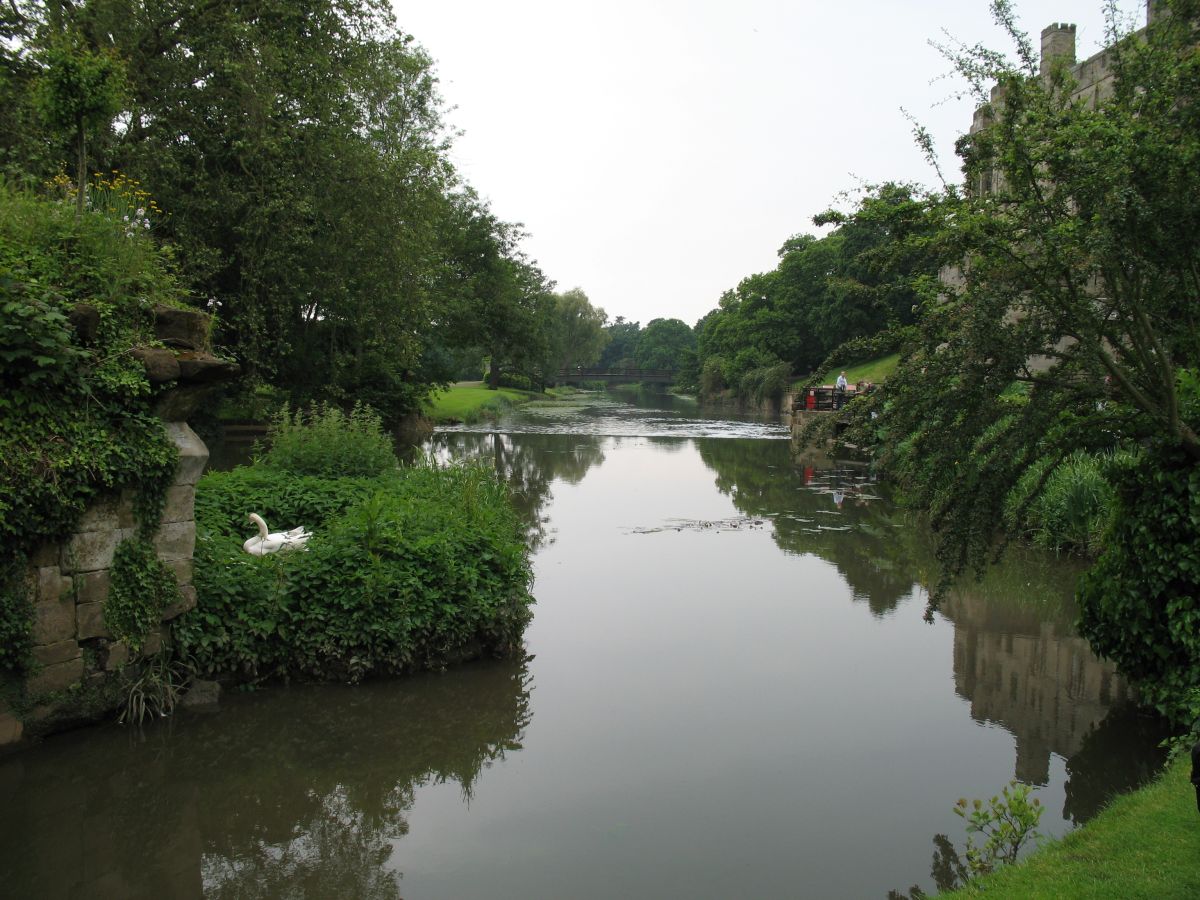Warwick
Visited June 2008
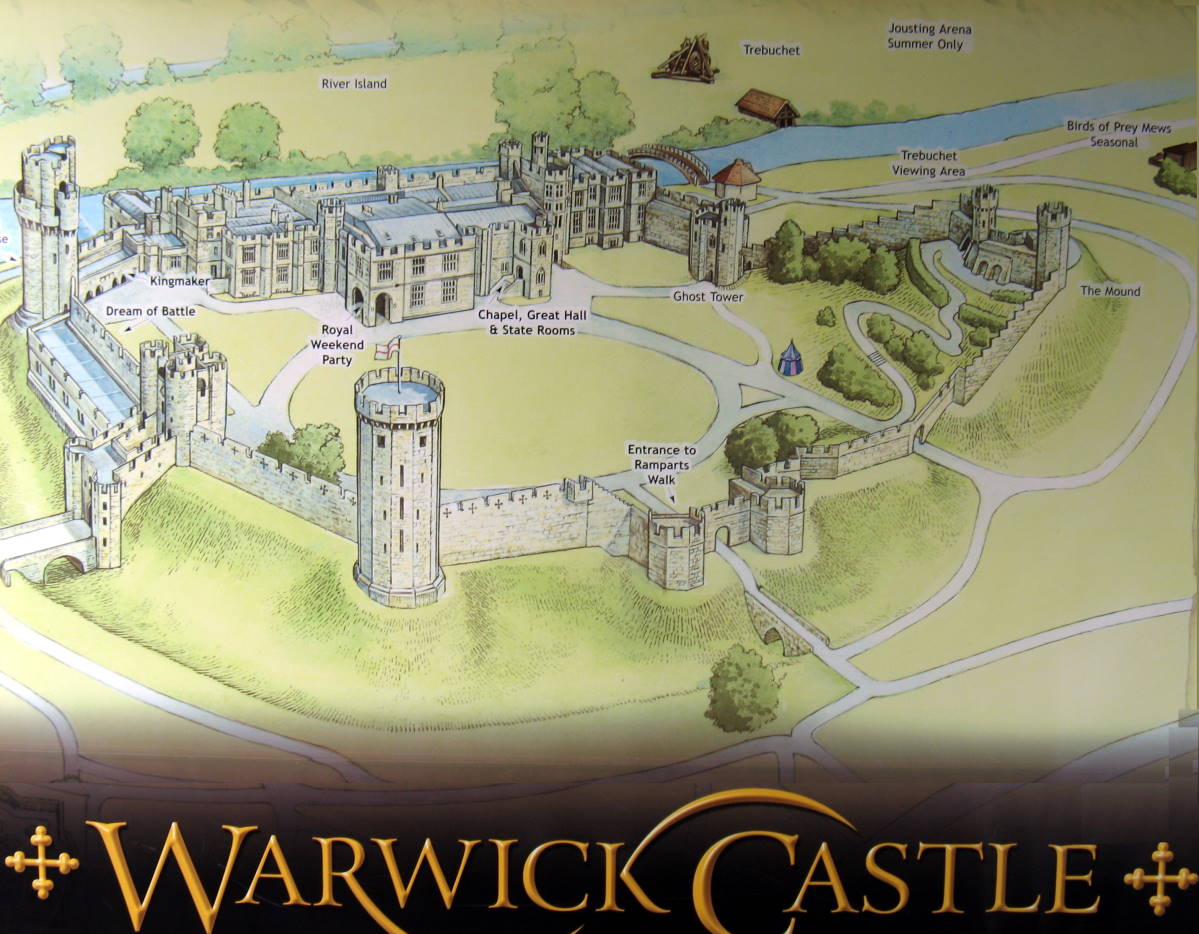
|
Our visit to Warwick began in the large car park off Banbury Road where we met our guide for the day Graham Sutherland, not the painter but his namesake, a former Master of the Brethren of Lord Leycester's Hospital. We started by walking up the path through Castle grounds to the convenient, in more ways than one, square at the Castle Entrance where the above photo was obtained. This visit did not include the Castle so we continued to Oken's House our fist true destination. This old building was the home of Thomas Oken in the early sixteenth century, making it around 500 years old. Oken, believed to be the richest man in Warwick at the time, made a fortune dealing in wool and woven fabrics. He died on 29th July 1573 and left most of his money and valuables to aid the poor and to fund education and housing in Warwick. Every year, as stated in his will, there is a Feast Day which is still held today; the toast in honour of Thomas Oken, Merchant and Mercer of the town of Warwick. The restored building now houses a traditional English Tea Room of which we availed ourselves. Then on to The Collegiate Church of St. Mary with its Beauchamp Chapel. This was my second visit to the chapel and confirmed my personal view that this is the most supreme example of any such dedicated chapel in England even in comparison with Westminster Abbey and St Georges Chapel at Windsor. To my mind it contains the heart of olde England. Then on to the Lord Leycester Hospital followed by a visit to a private medieval House in Mill street sill in use as a home and finally to the Mill Gardens adjacent to the Castle by the Avon. Our trek to the "Hospital" is shown in red and our return is shown in blue on the map below. 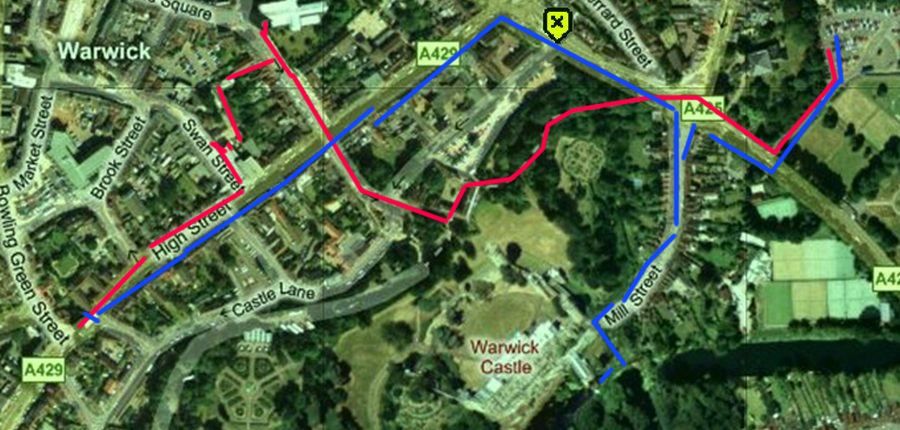 I have just noticed something I have missed out - Before reaching the Hospital we visited The Warwick Museum and saw amongst other exhibits Sheldon's Tapestry. However it was kept in the dark and with no flash the photo is not worth reproduction. |

Warwick Castle
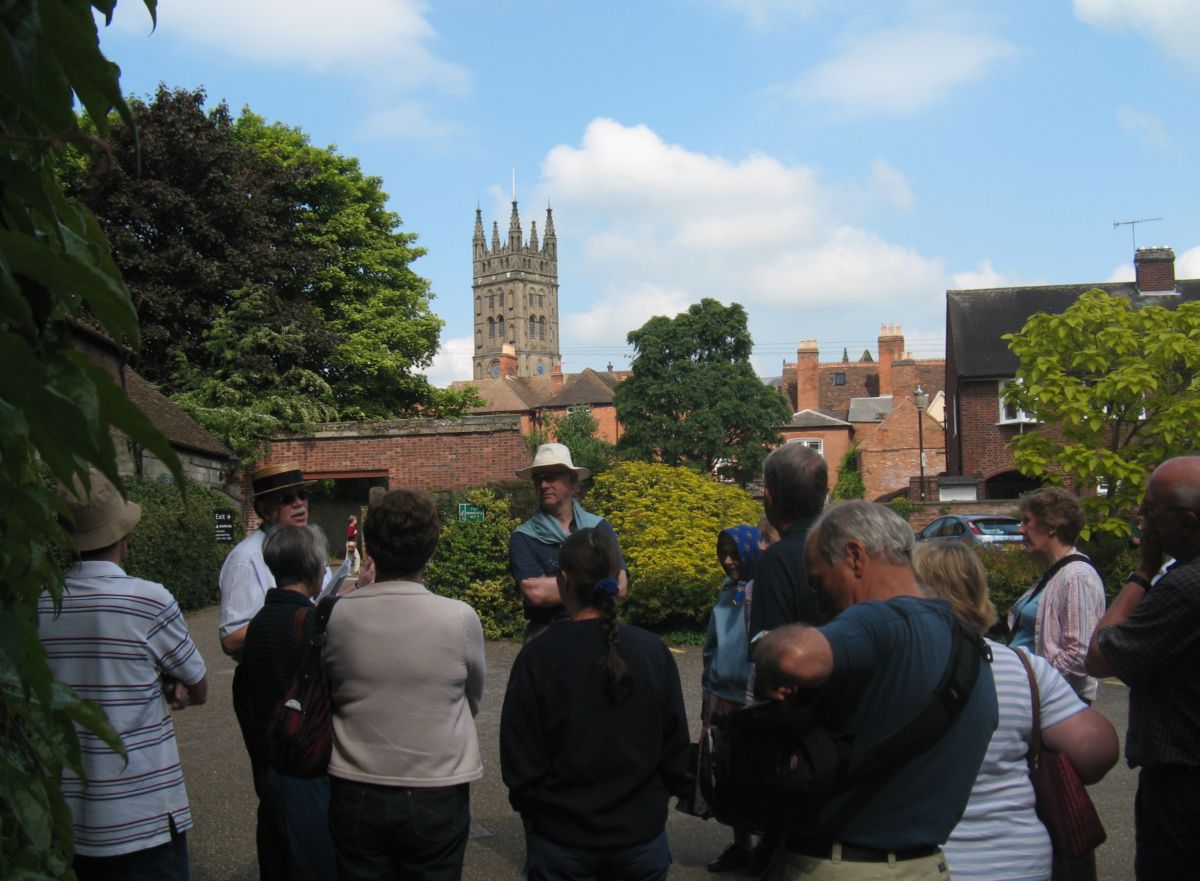
Our Guide
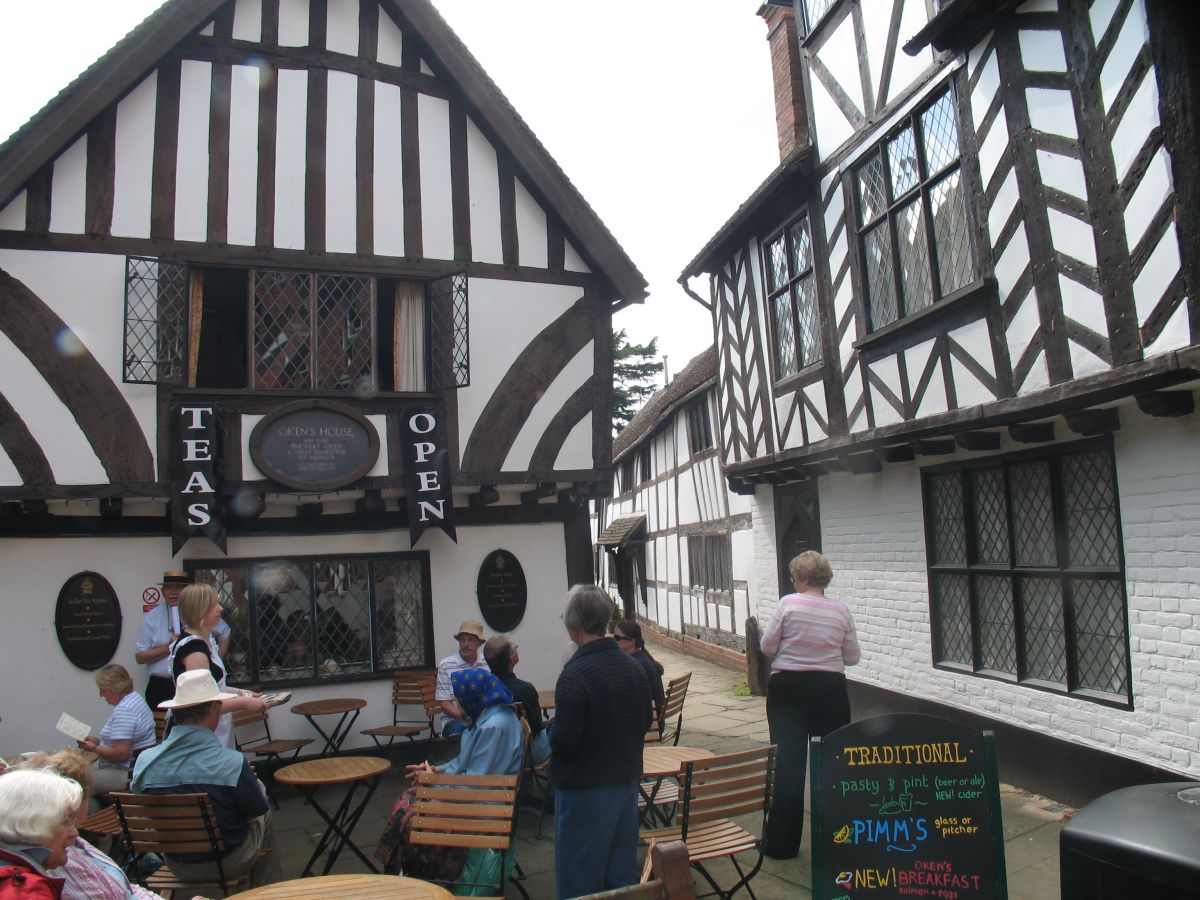
Tea Break
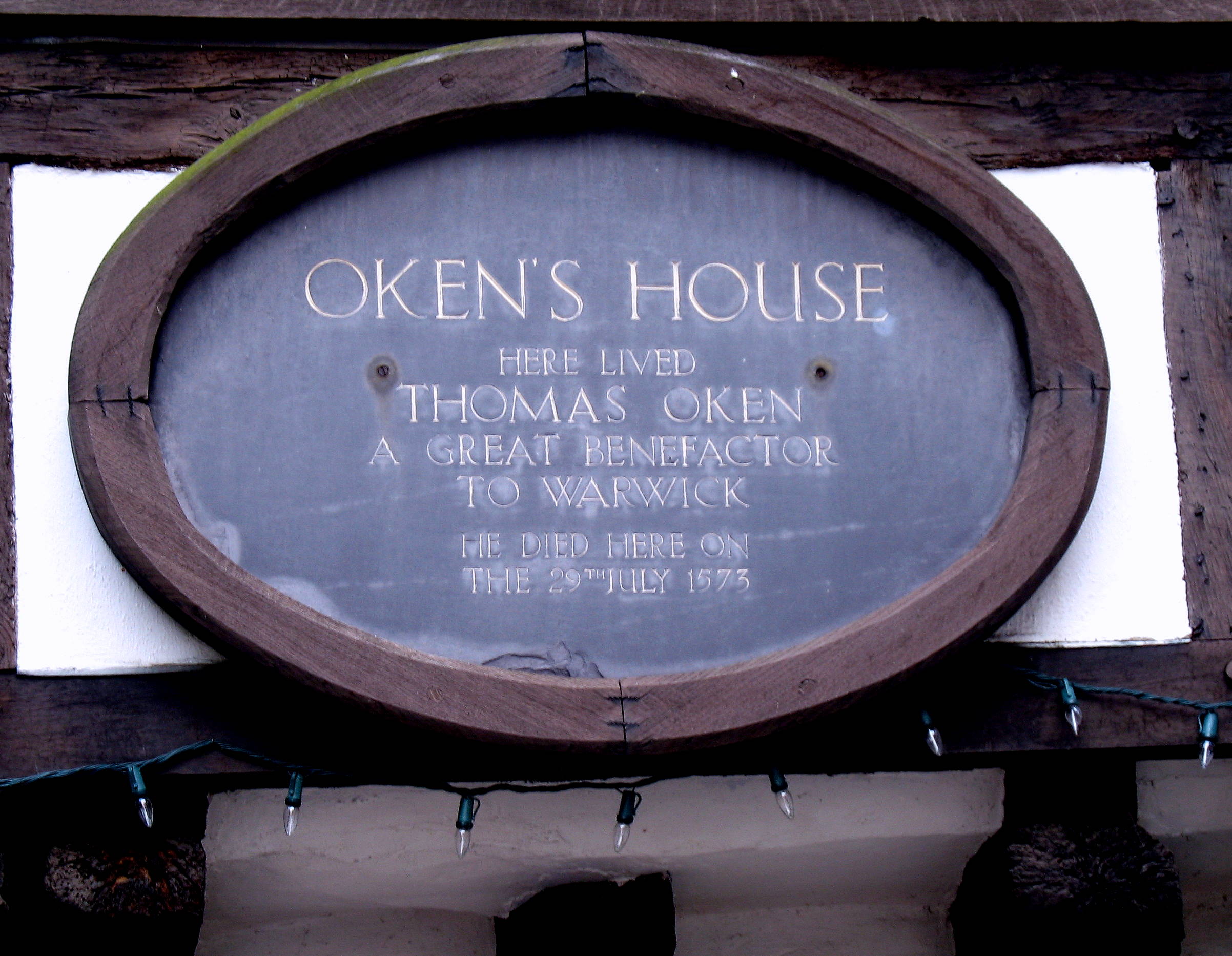
Oken's House
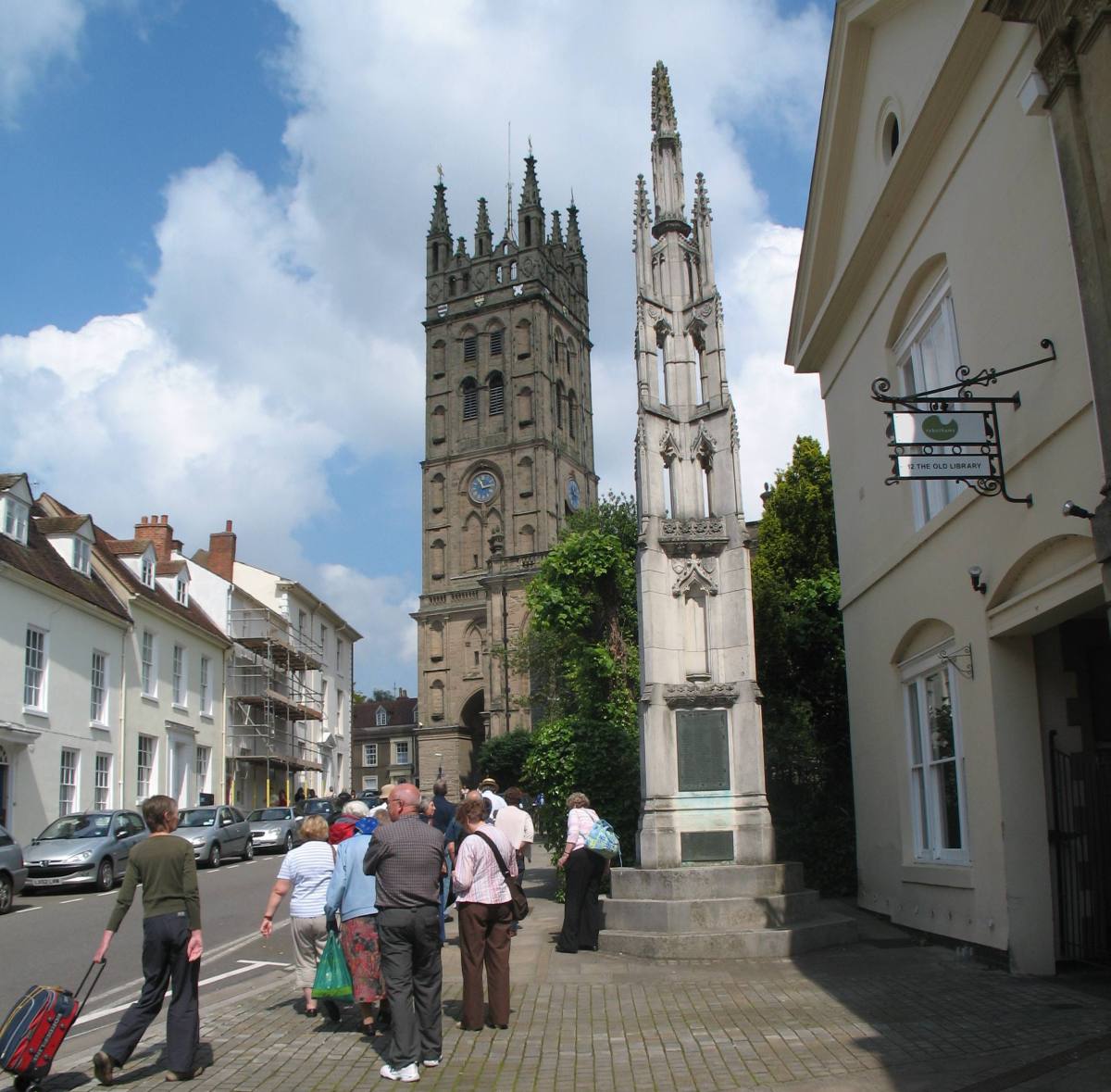
The Collegiate Church of St. Mary
Collegiate Church of St. Mary
St Mary’s was founded on its present site in 1123 by Robert de Newburgh, the Earl of Warwick. The Crypt still remains from the original Norman building, though most of the remainder was lost in the fire that destroyed so much of medieval Warwick.The Chancel, Vestry and Chapter House were rebuilt in the Fourteenth Century by Thomas Beauchamp, and this section of the building represents one of the highest peaks of English Gothic architecture. The tomb of Thomas Beauchamp stands in front of the high altar; the tiny figures around its base give a fine depiction of Fourteenth Century English fashion.
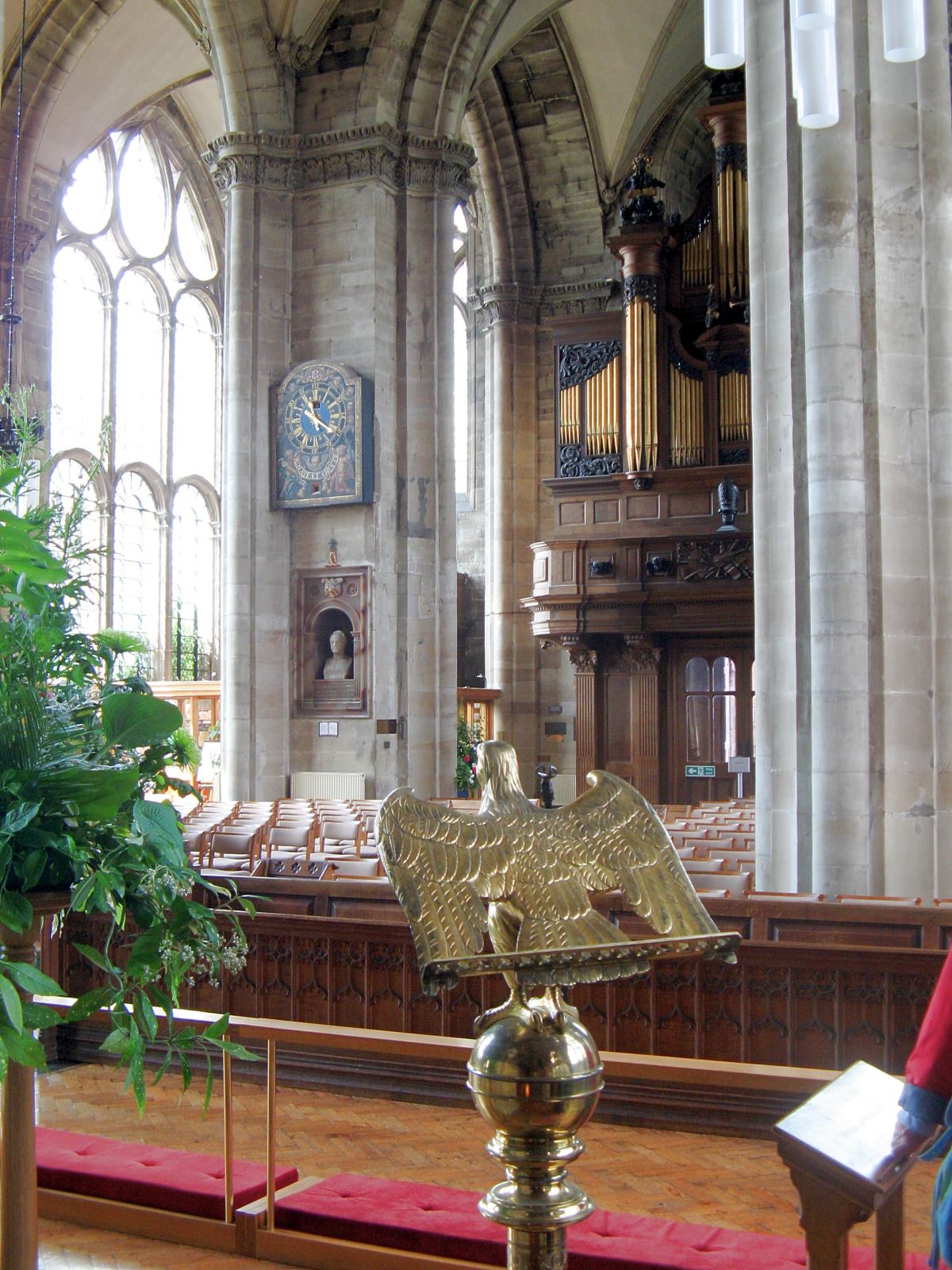
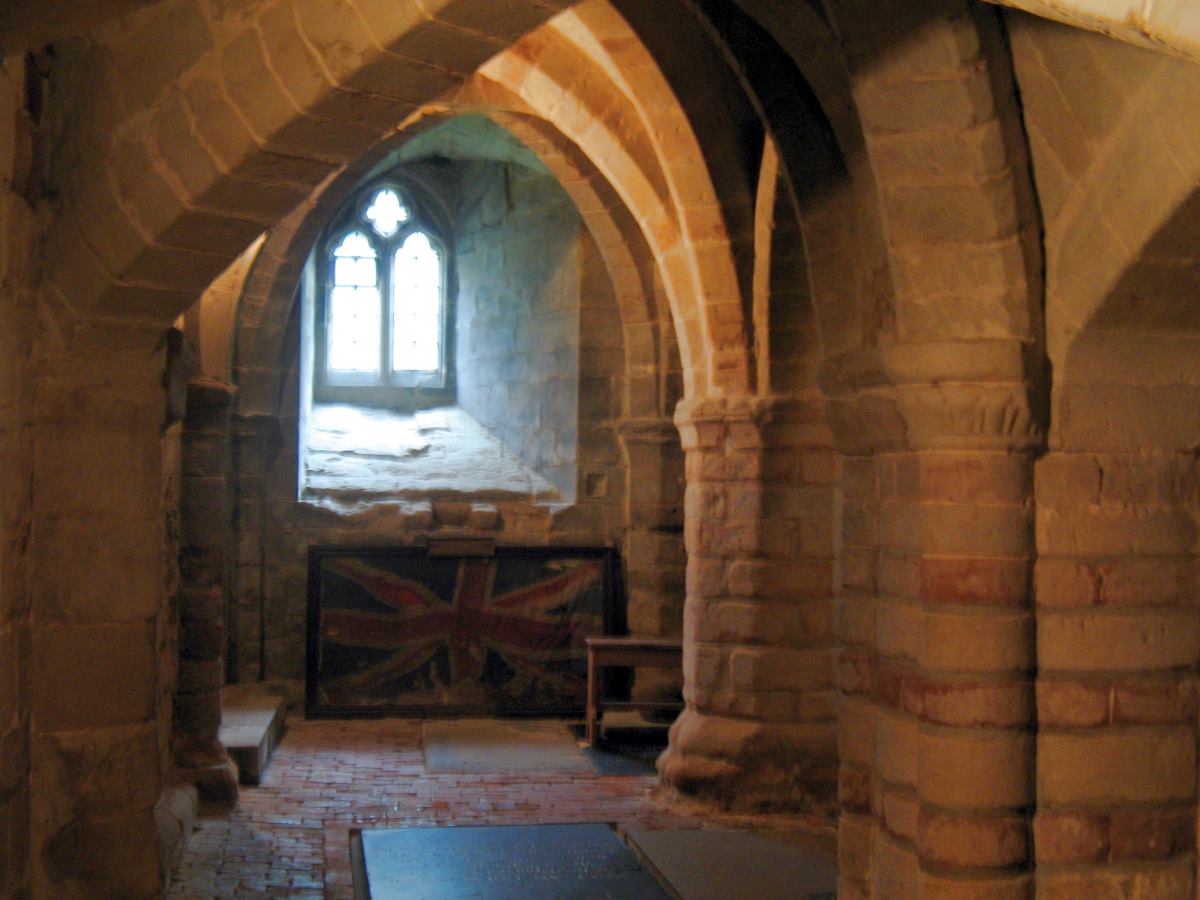
The Crypt
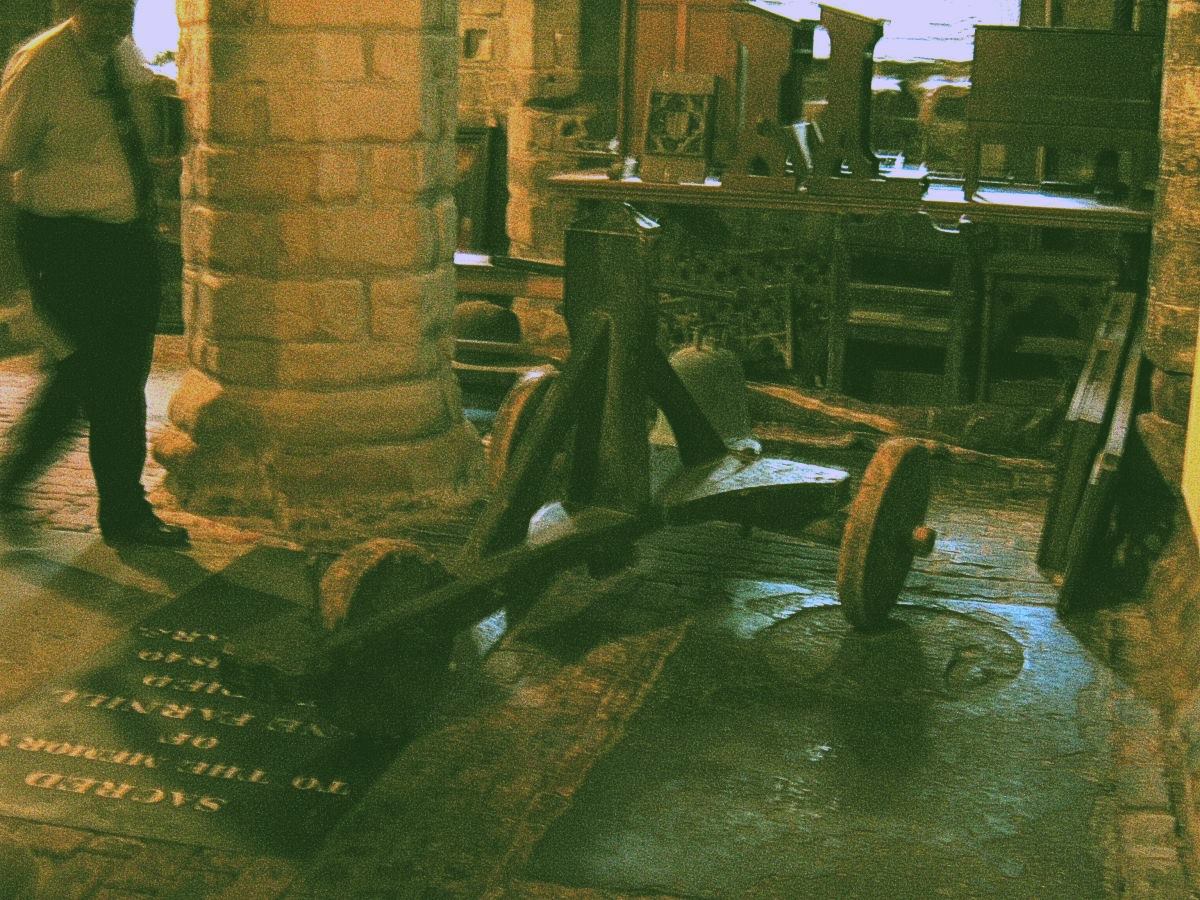
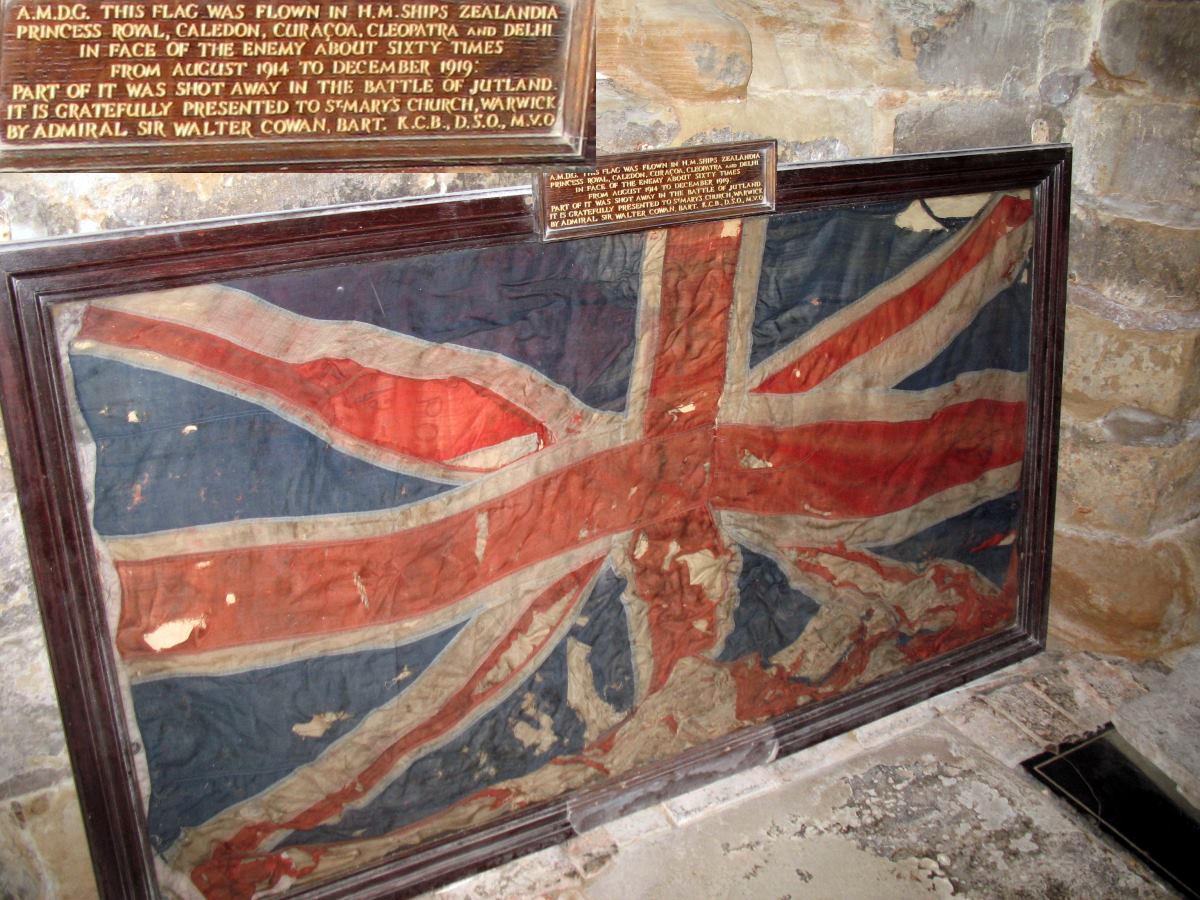
Battle Flag
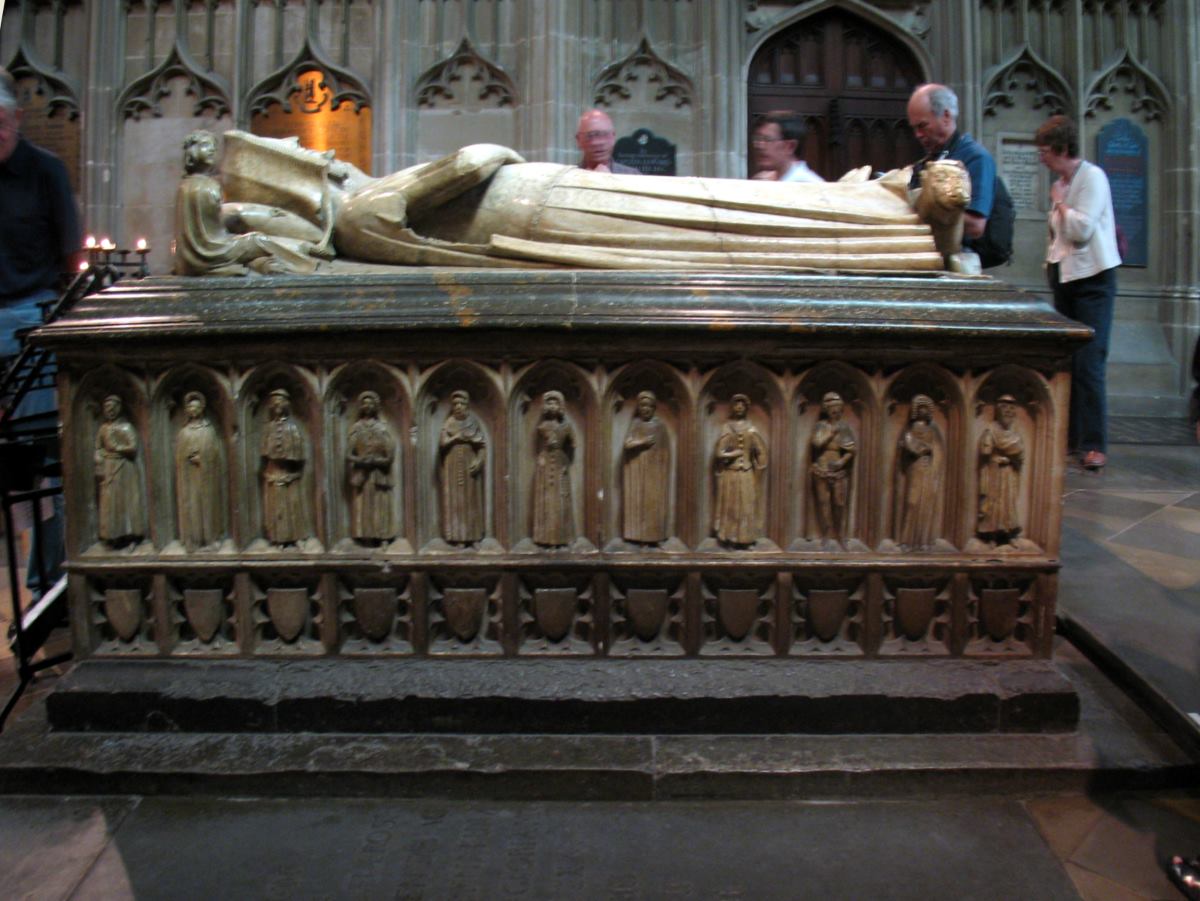
Thomas Beauchamp's Tomb N

Thomas Beauchamp's Tomb S
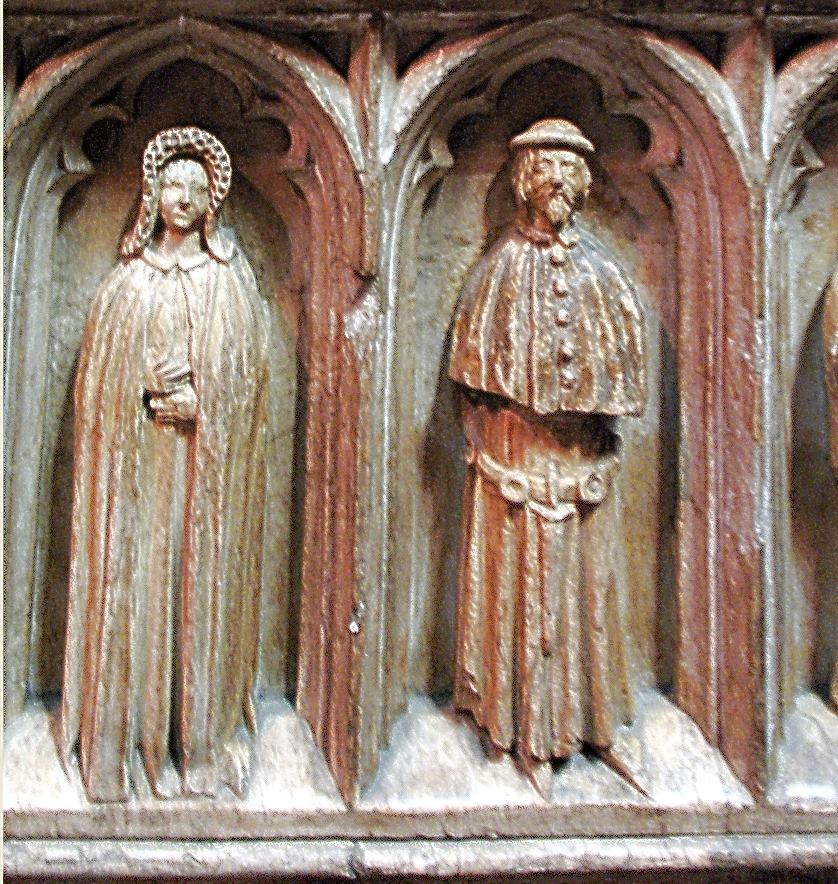
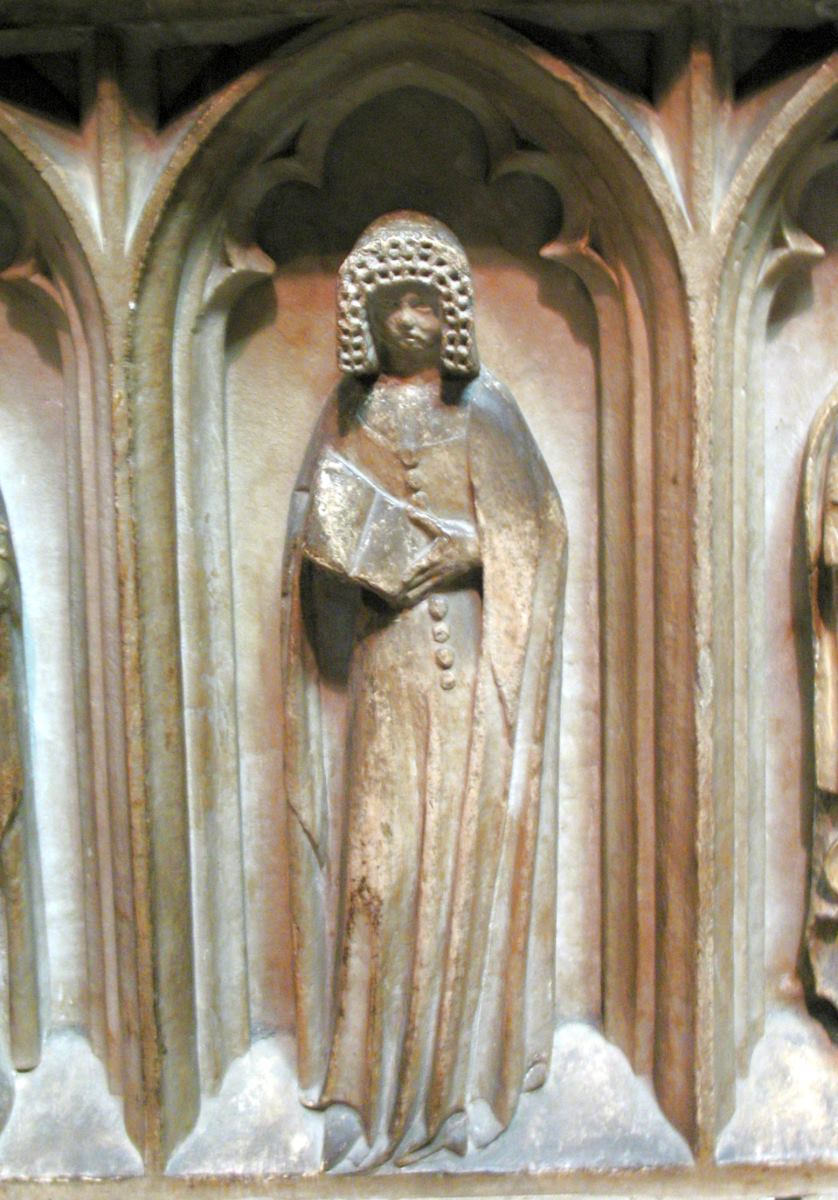
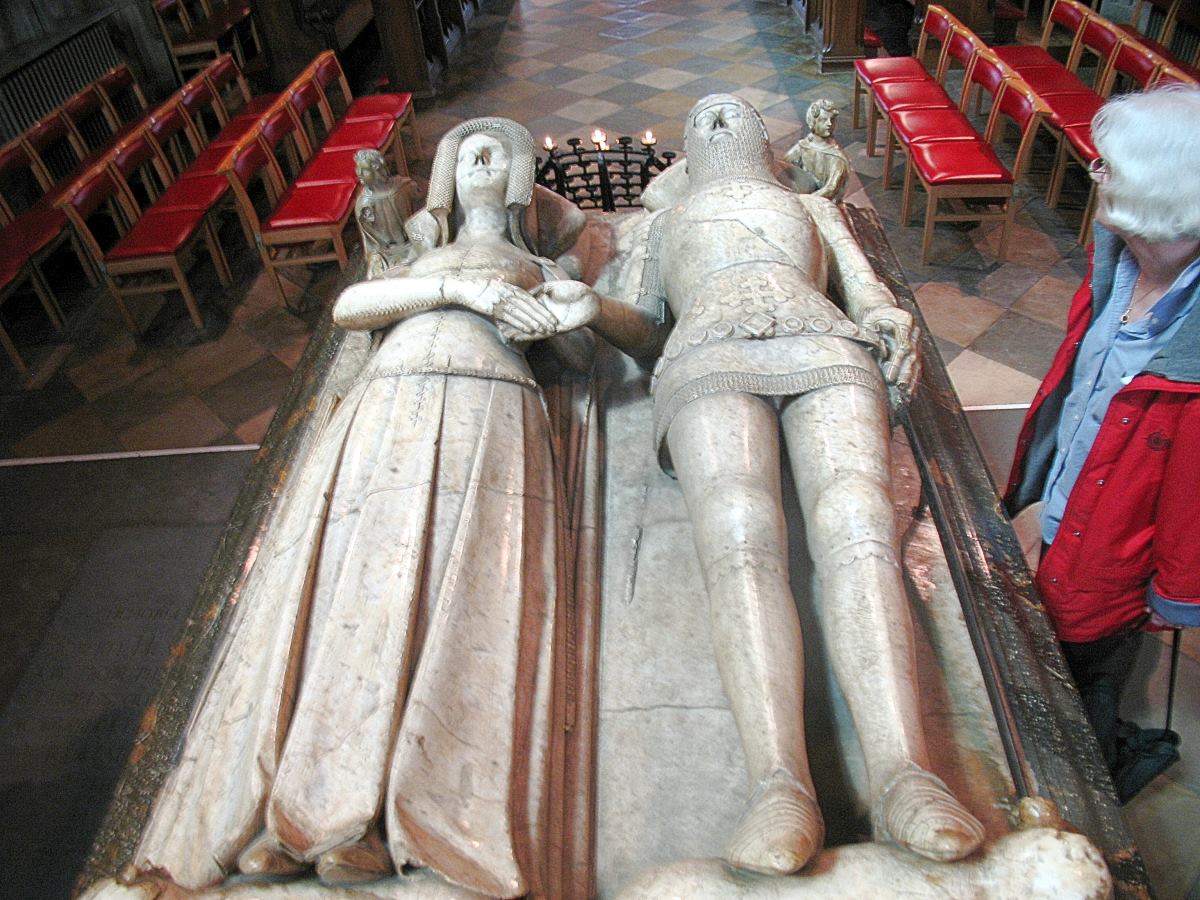
Thomas Beauchamp
Hand in Hand
Hand in Hand
"The Beauchamp Chapel"
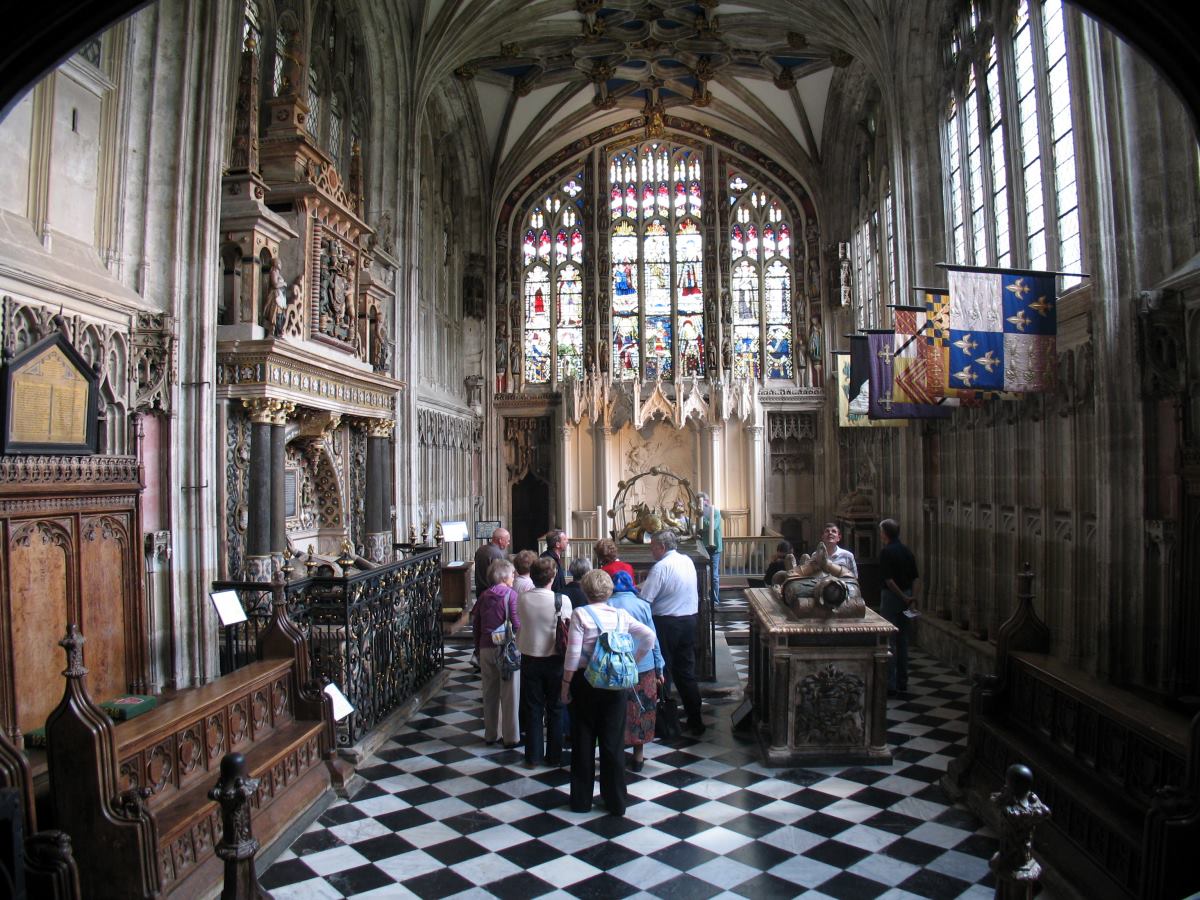
| I will that when it liketh to God, that my sole depart out of this world, my body be interred within the Church Collegiate of our Lady in Warwick, where I will that in such place as I have desired, which is well known, there be made a chapel of our Lady, well, fair and goodly built; within the middle of which chapel I will that my tomb be made. And in the meantime, my body to be laid in a clean chest afore the altar that is on the right hand of my Lord, my father's tomb, till the time that the said chapel and tomb for me be made, and then my body to be taken up and laid therein. Also I will that there be said every day, during the world, in the aforesaid chapel that, with the grace of God, shall be thus new made, three masses. This excerpt from the will of Richard Beauchamp 13th Earl of Warwick "Richard Beauchamp's Tomb"At the centre of the Chapel is Richard Beauchamp's effigy, made of latten (an alloy similar to bronze). It was cast by William Austen of London and gilded by the Dutchman, Bartholomew Lambspring, but it is unlikely that the effigy is an accurate portrait.Richard's head rests on a swan, part of the Beauchamp crest, which implies descent from the legendary Lohengrin. Under his right foot is the Beauchamp bear and under his left is the griffin, the emblem of the de Spencer family. On the right hip of the effigy there was a dagger depicted in an illustration of 1806 but it is now sadly missing. Spurs were probably attached to the boots, as there appear to be fixing holes. Richard's hands are held in an attitude of prayer, but open enough to allow him to gaze upon the figure of Mary, crowned Queen of Heaven, in the ceiling. Over the figure of Richard is a 'hearse' - a cage-like construction probably built to support a fabric cover, which would have, been removed to reveal the figure only when mass was said for his soul. There are only two other such hearses in the country - one over the figure of Robert, son of William the Conqueror in Gloucester Cathedral. |

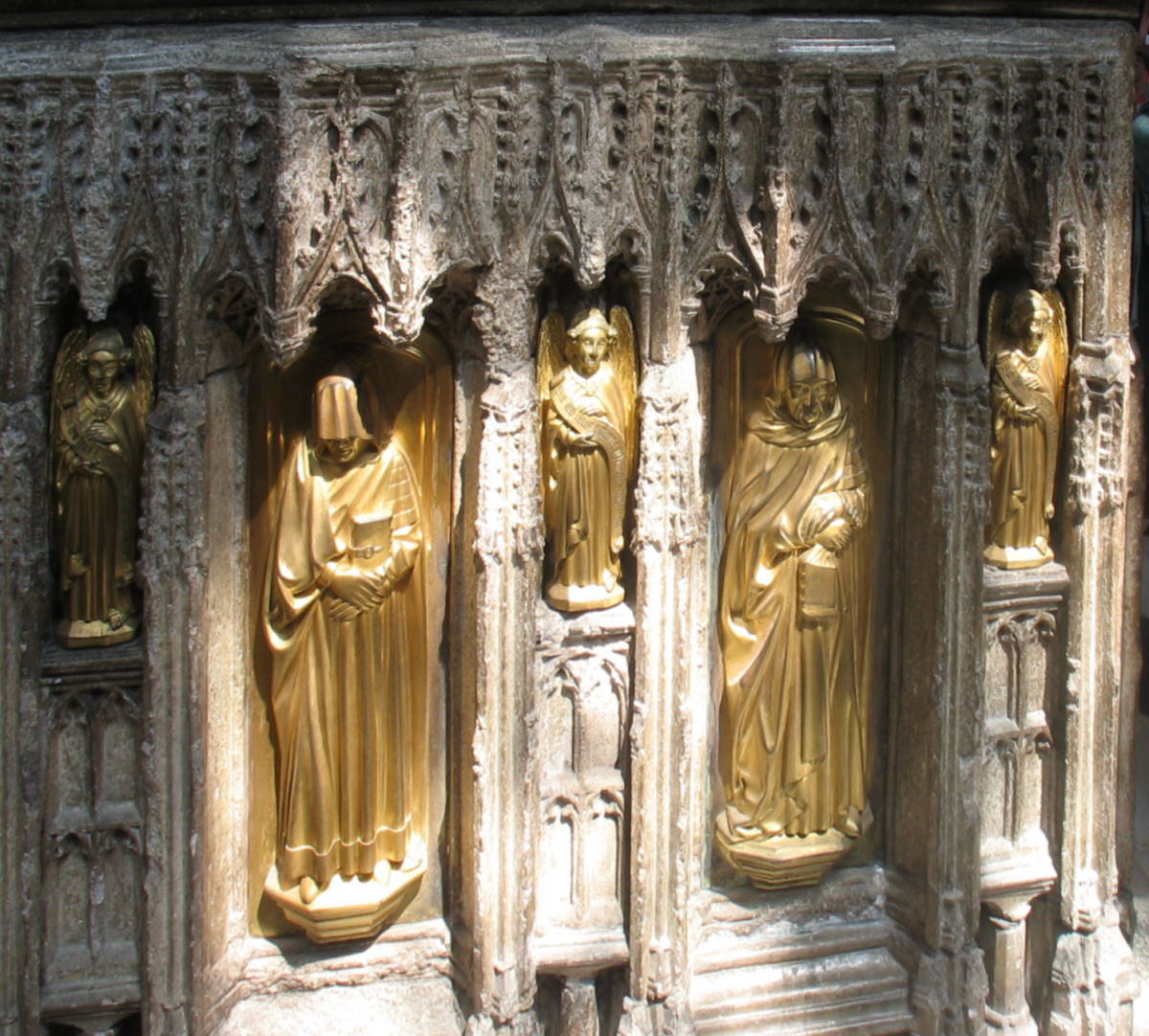
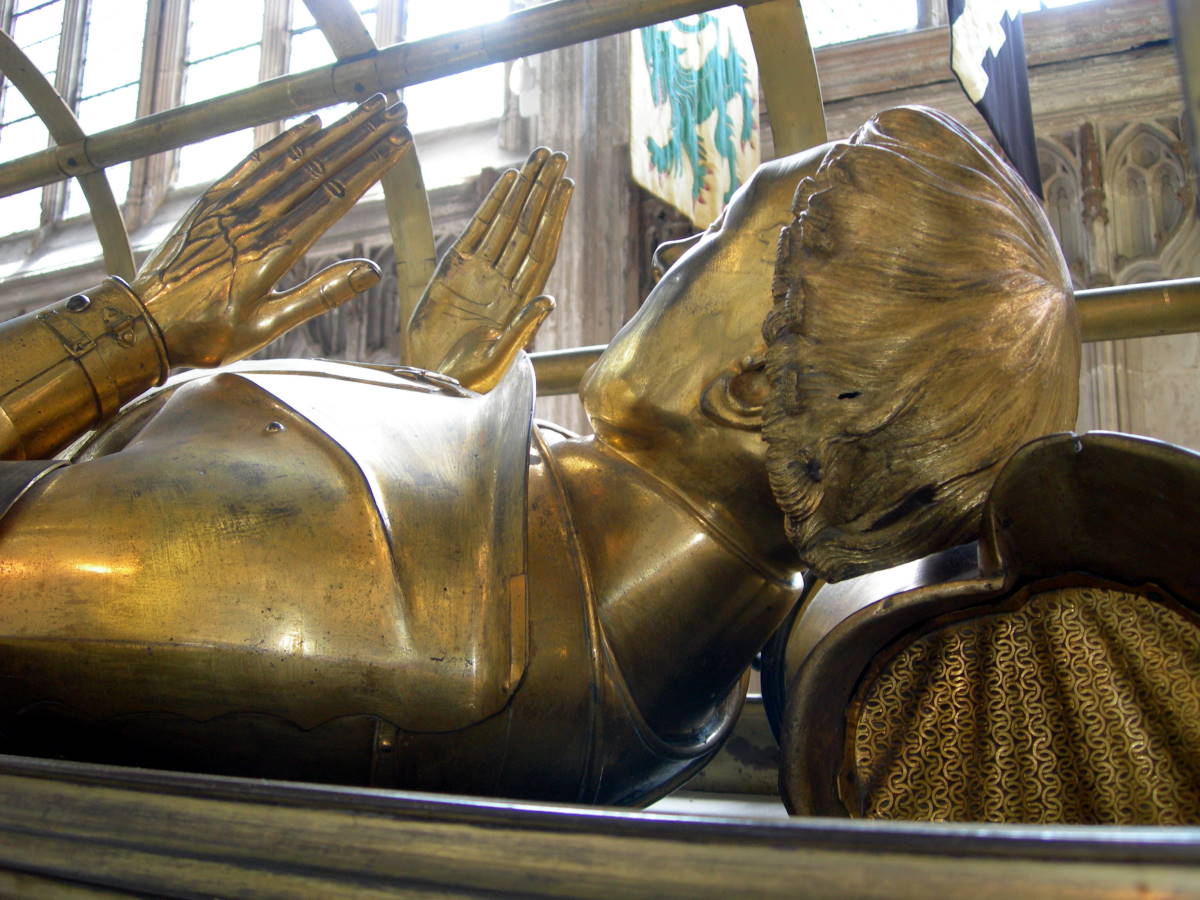
Richard Beauchamp
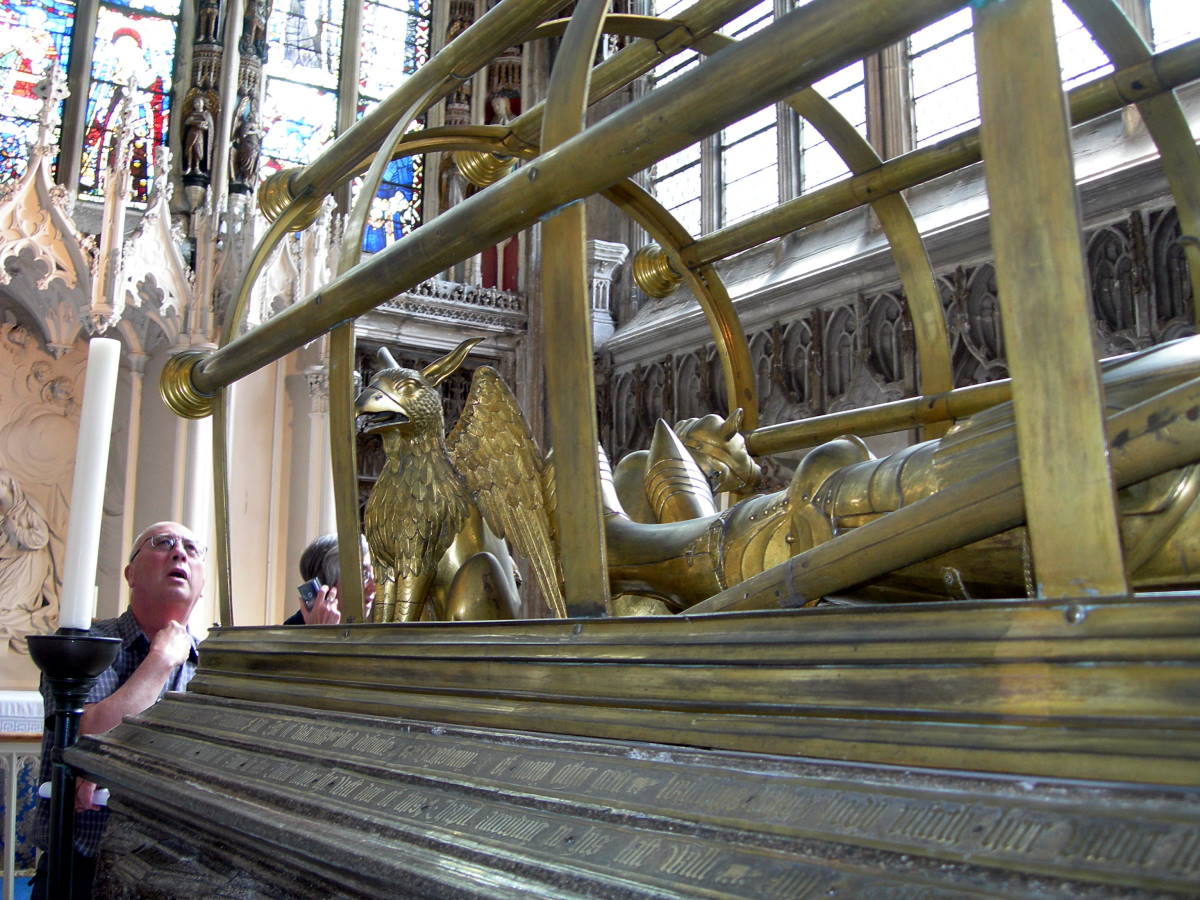
Tomb Details
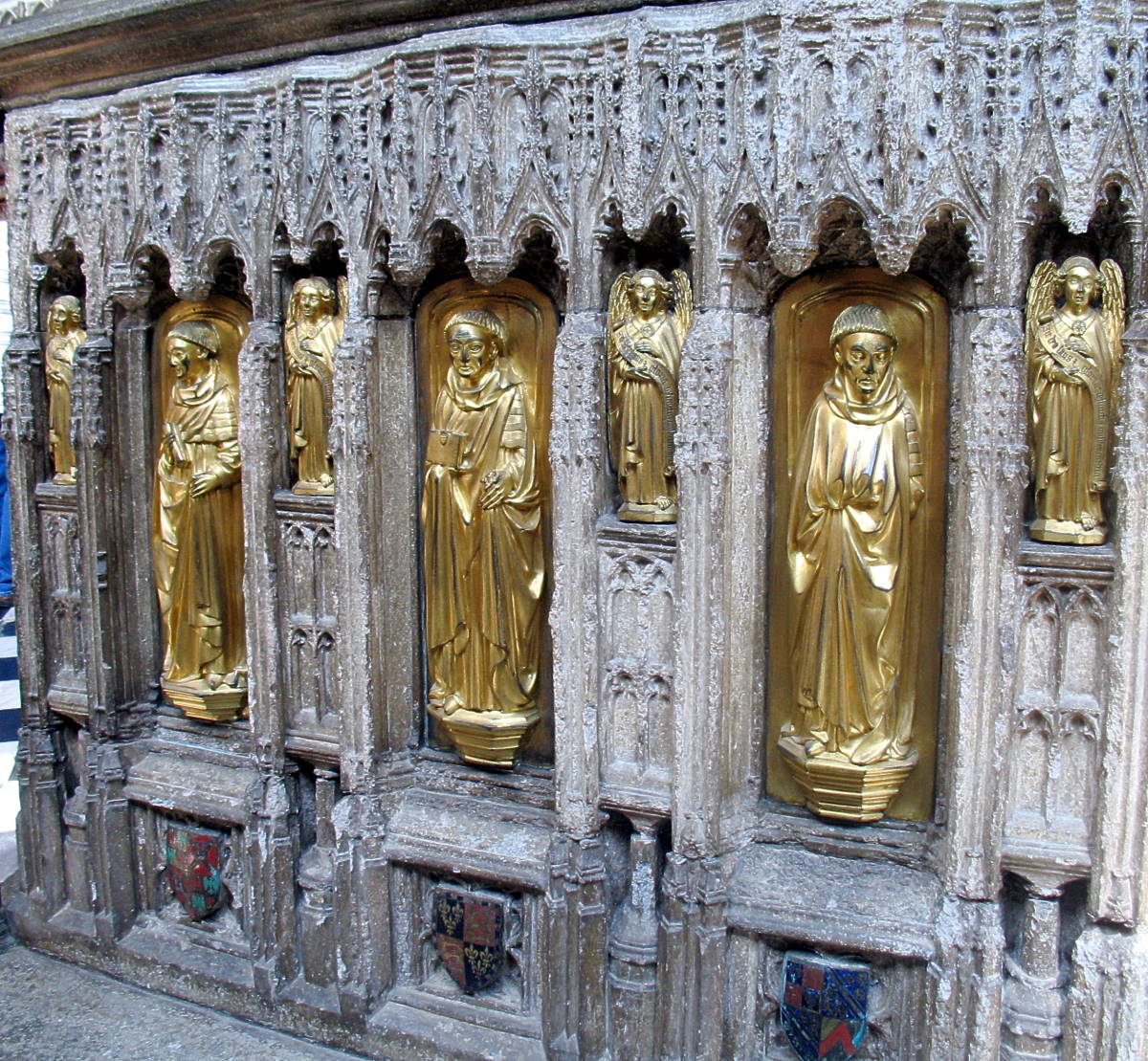
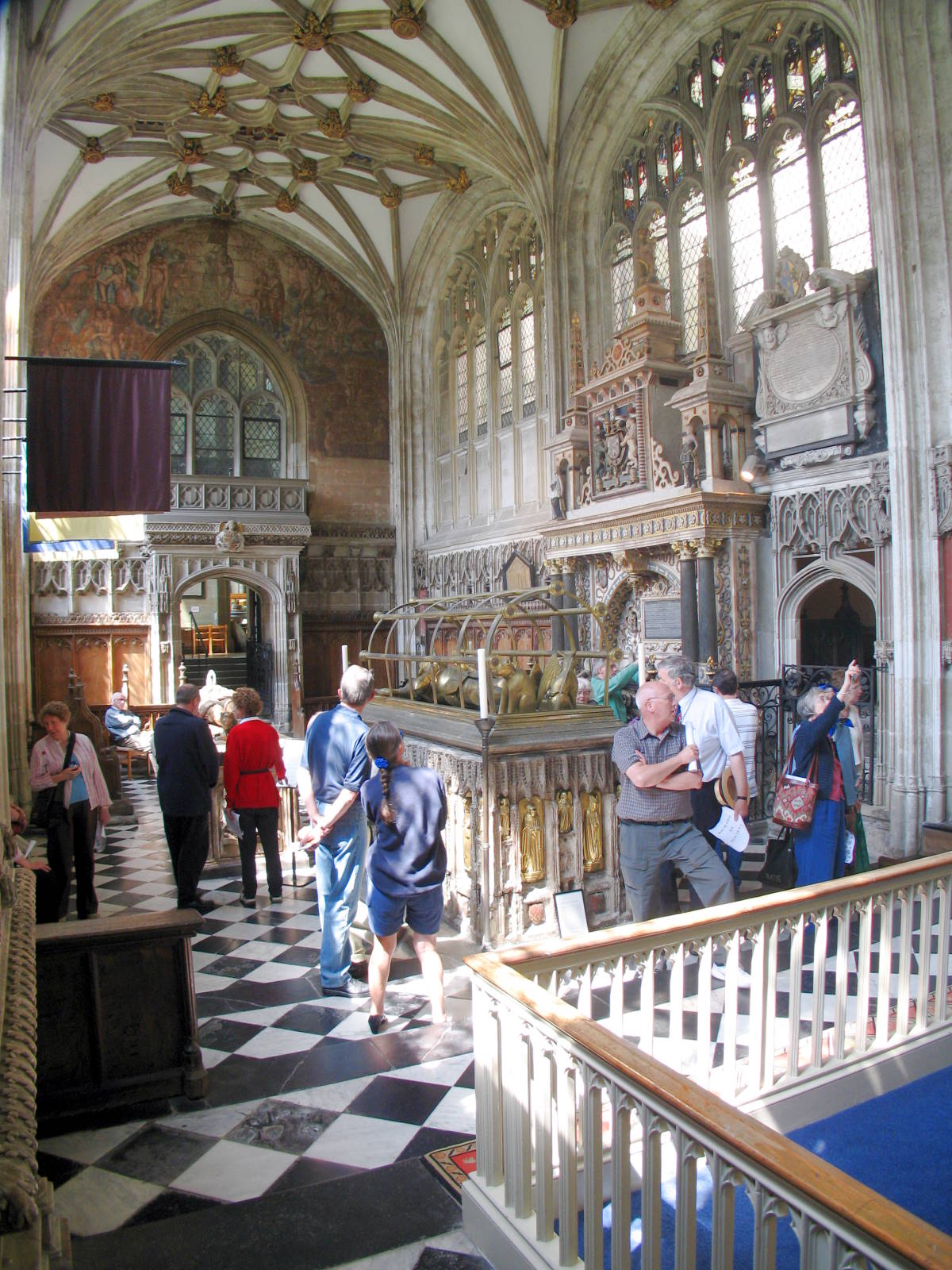
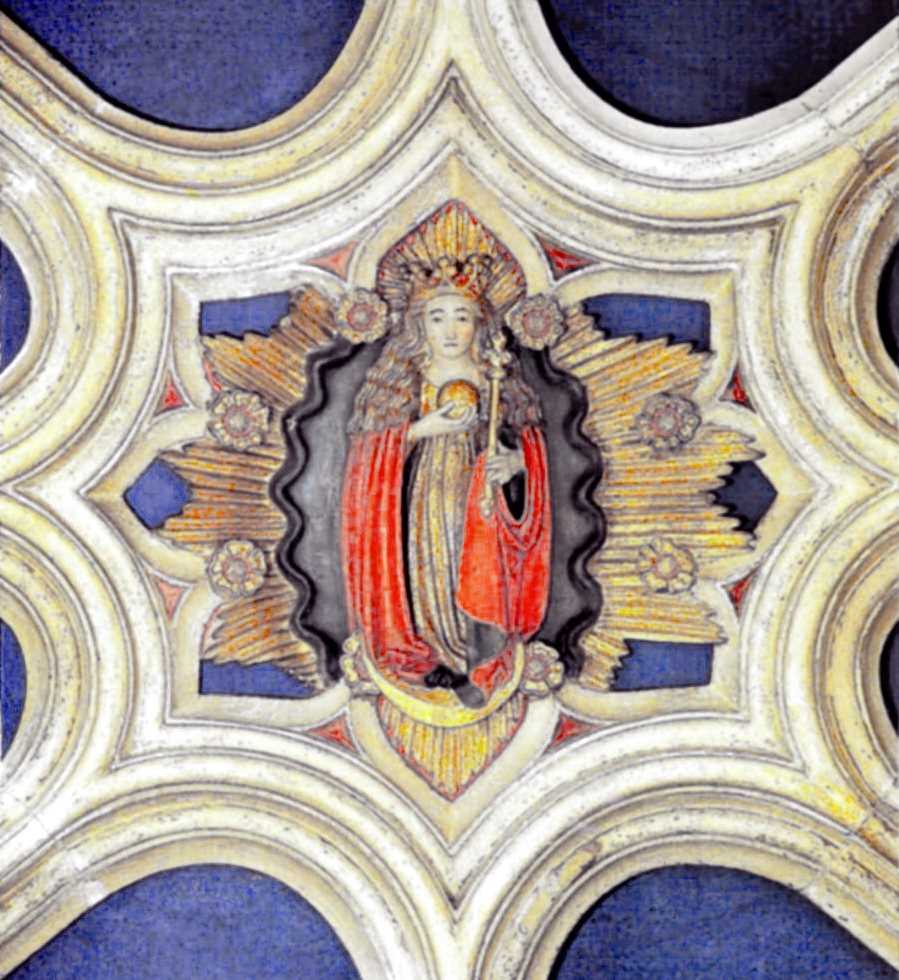
Richard Beauchamp's Eye View
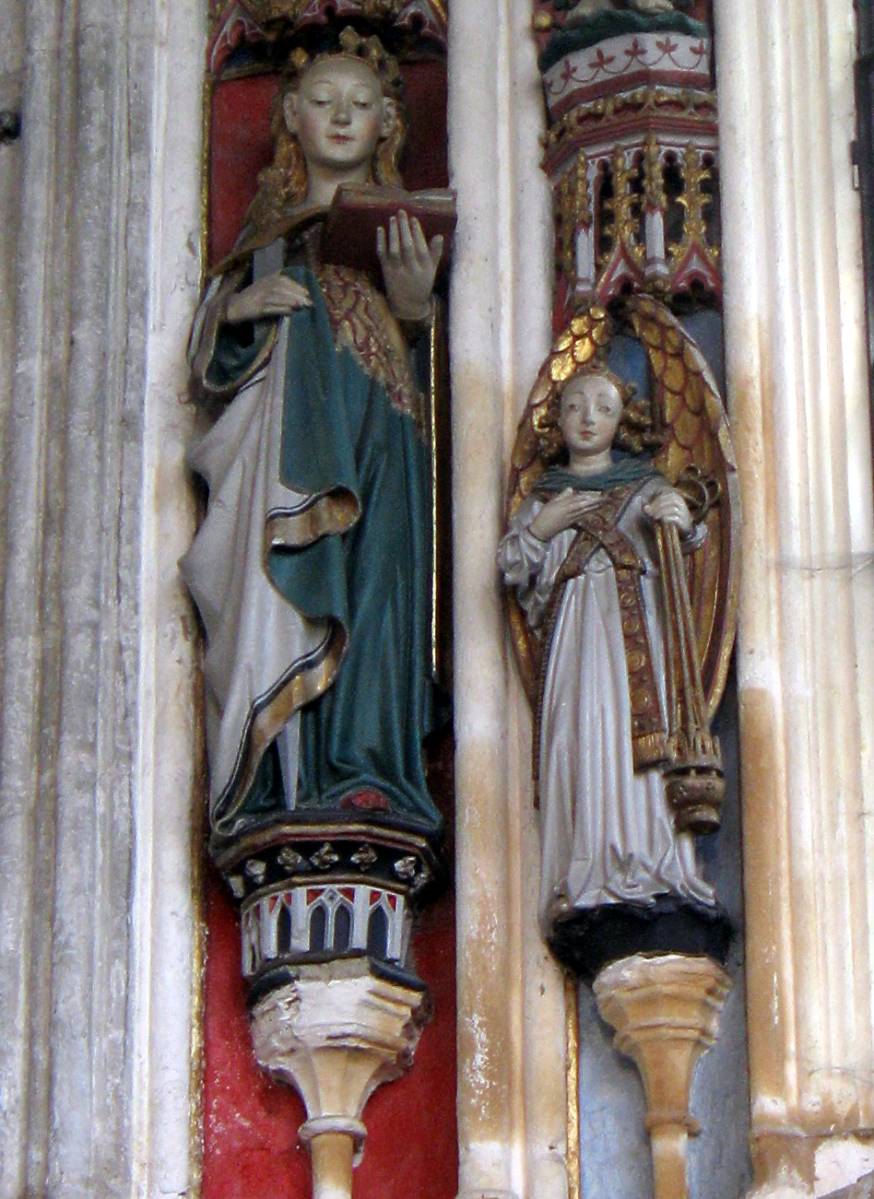
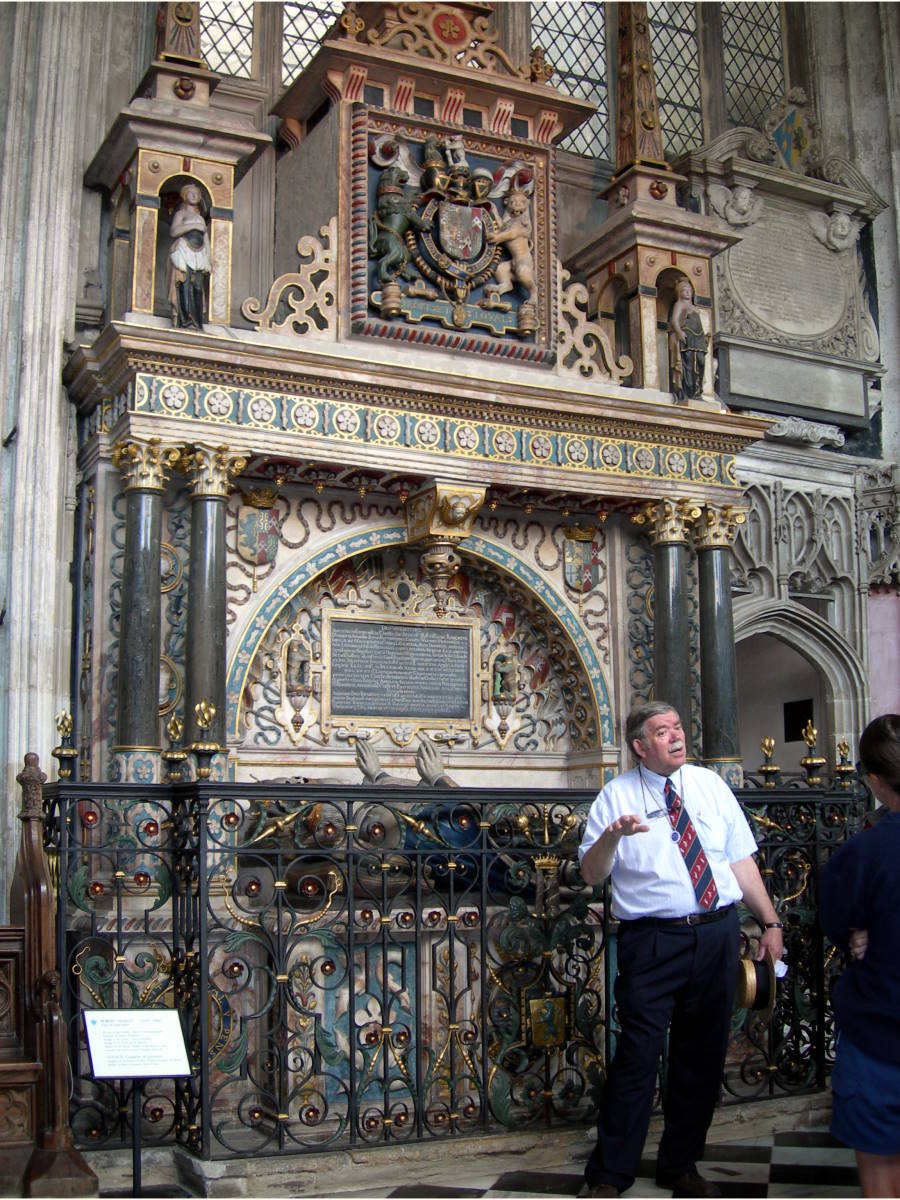
The Three Dudleys
|
The three Dudley tombs were added more than a century after the building of the Chapel, and it is fascinating to compare the differences in style between the late medieval period of Richard Beauchamp, and the Elizabethan era. These tombs, especially that of Robert and Lettice, are almost outrageous in their garish use of bright colours, gilding and motifs. The first of the three Dudley tombs to be added was that of the infant Robert Dudley, 'the noble impe', son of Robert and Lettice. His tomb lies to the south side of the 'altar and his age is unknown, although he was probably five years old when he died in 1584. Robert Dudley, who died in 1588, was Queen Elizabeth's favourite and at one time her potential husband. His tomb, shared with Lettice his second wife, is surrounded with eighteenth-century ironwork by Nicholas Paris. In 1559, at Elizabeth's Coronation, Robert was Master of the Horse and rode immediately behind the royal carriage. Tiepolo, an Italian envoy, wrote, 'Lord Robert was a very handsome young man to whom the Queen evinces much affection and inclination that many people believe that if his wife who has been ailing for some time were to die, the Queen might take him for her husband'. In niches below the obelisks at the top of the tomb the two female figures represent war and peace. Either side of the epitaph are two exquisitely modelled bears with ragged staffs. The inscription on Robert Dudley's tomb, which is in Latin, reads: Sacred to the God of the living. In certain hope of a resurrection in Christ, here lieth the most illustrious Robert Dudley, fifth son of John, Duke of Northumberland, Earl of Warwick, Viscount Lisle, etc. He was Earl of Leicester, Baron of Denbeigh, Knight both of the Order of the Garter and of St Michael, Master of the Horse to Queen Elizabeth (who distinguished him by particular favour), soon after Steward of the Queen s household, Privy Councillor, Justice of the Forests, Parks and Chases on this side of the Trent. From the year 1585 to the year 1587 Lieutenant and Captain General of the English army sent by the said Queen Elizabeth to the Netherlands; Governor General and Commander of the provinces united in that place; Lieutenant Governor of England against Phillip 11 of Spain in the year 1588, when he was preparing to invade England with a numerous fleet and army. He gave his soul to God his saviour on the 4th day of September in the year of salvation 1588. His most sorrowful wife Lettice, daughter of Frances Knolles, Knight of the Order of the Garter, and Treasurer to the Queen, through a sense of congjugal love andfidelity, hath put up this monument to the best and dearest of husbands. |
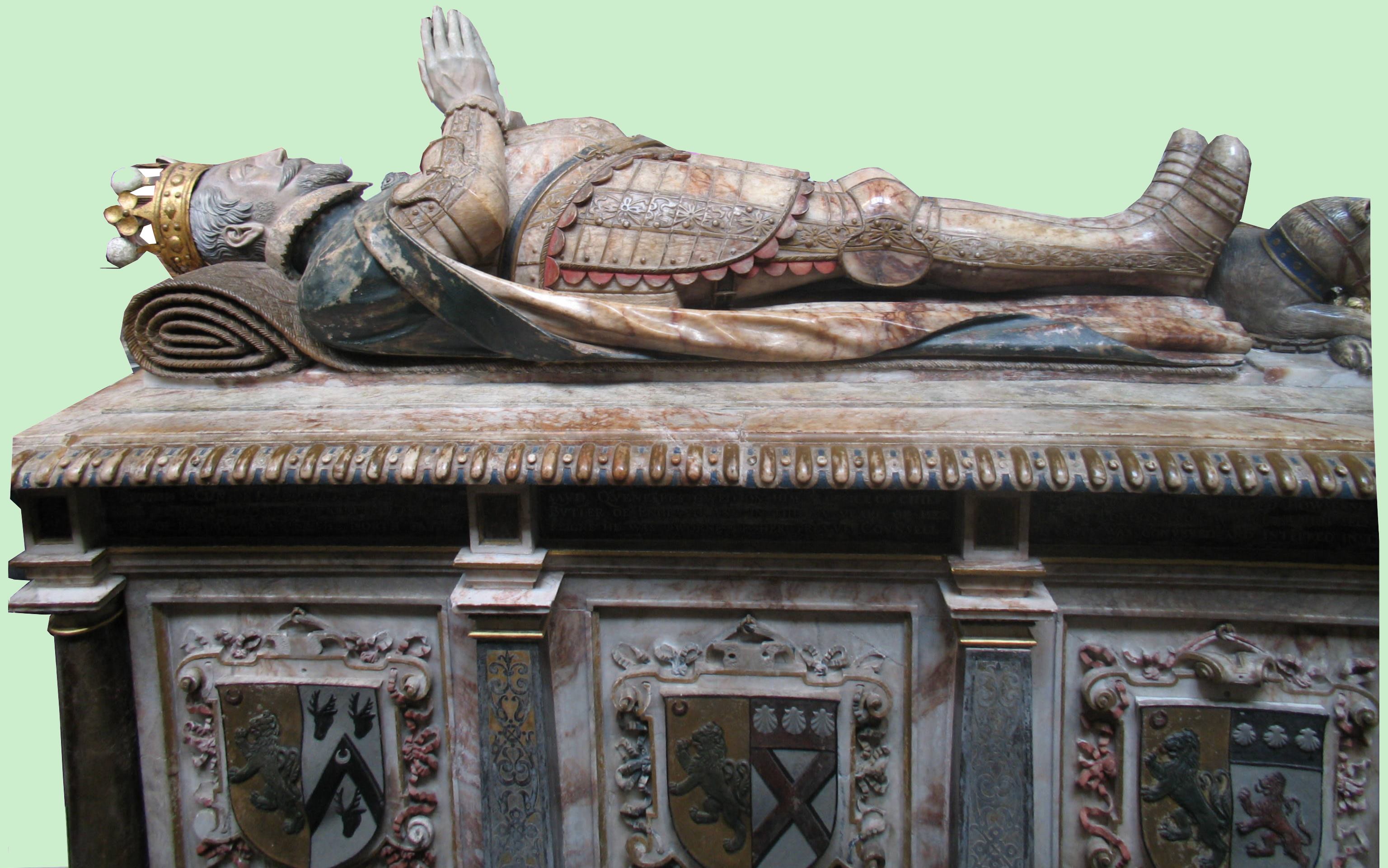
Ambrose Dudley
"The Good Earl"
"The Good Earl"

The Arms On The Side Of The Tomb
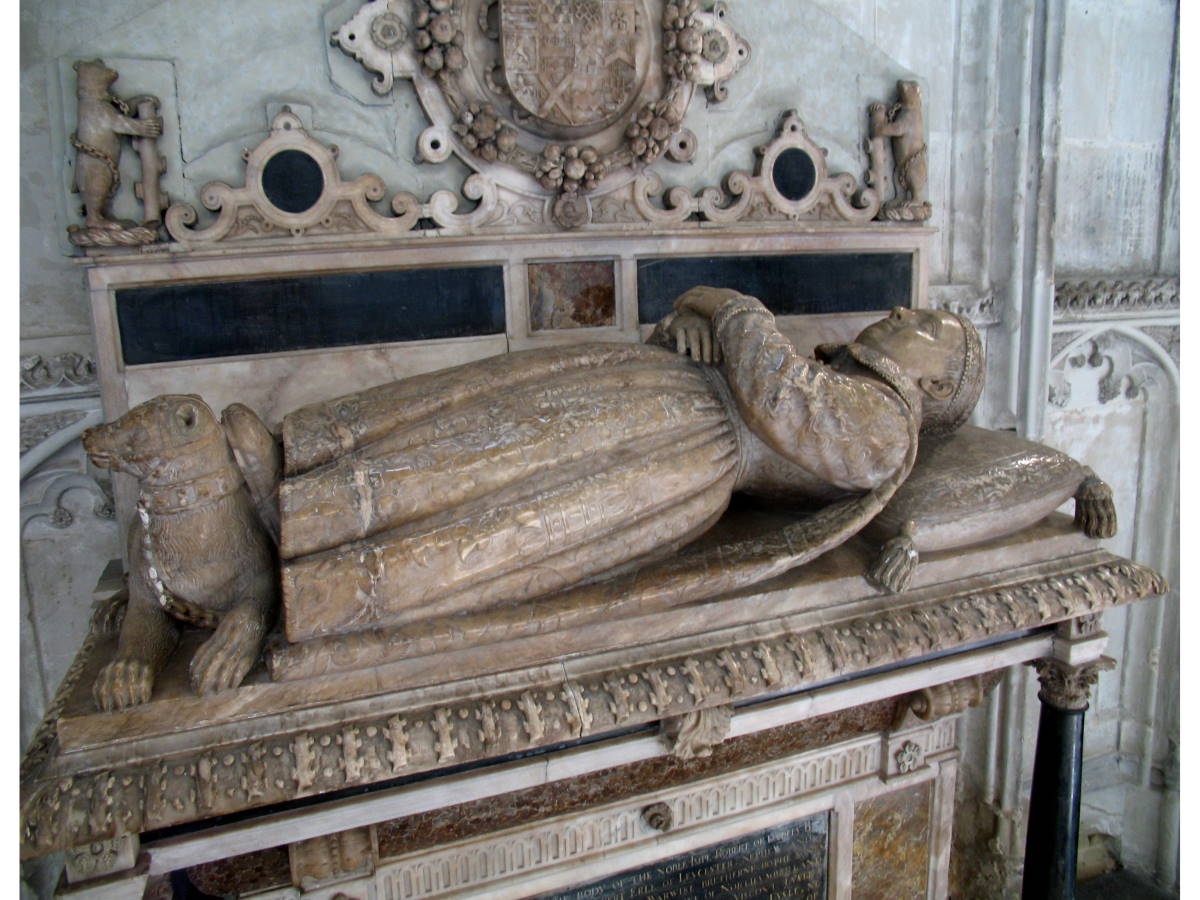
The Noble Impe
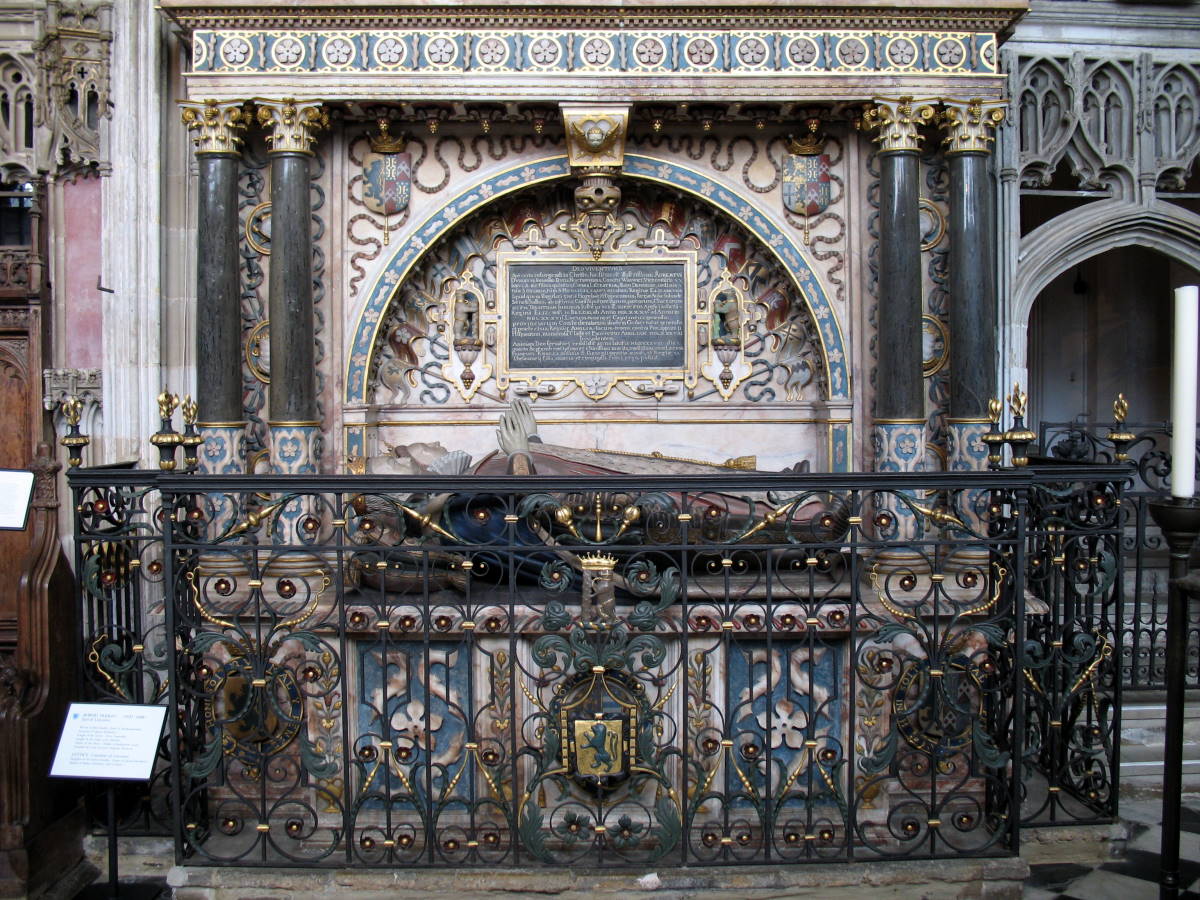
Robert and Lettice Dudley
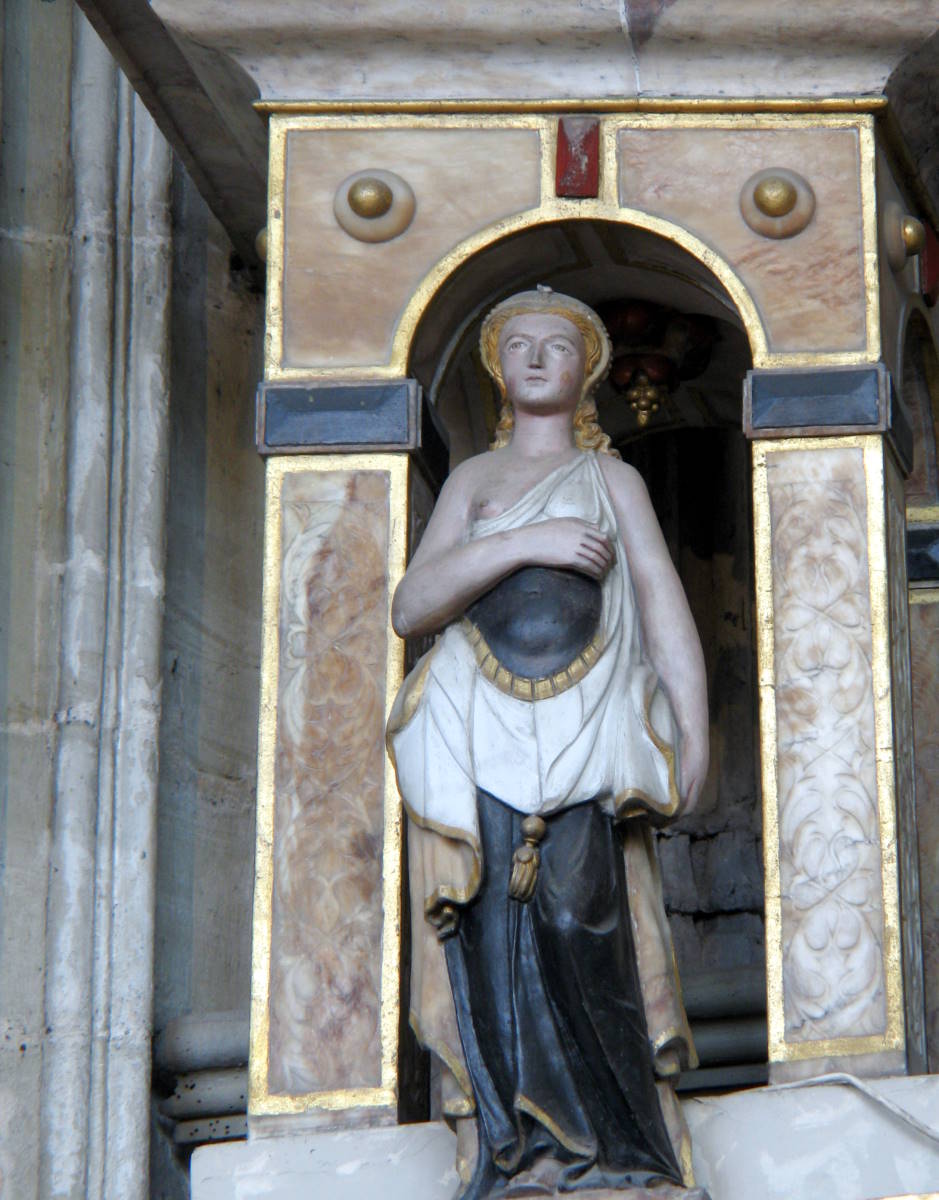
"Peace"
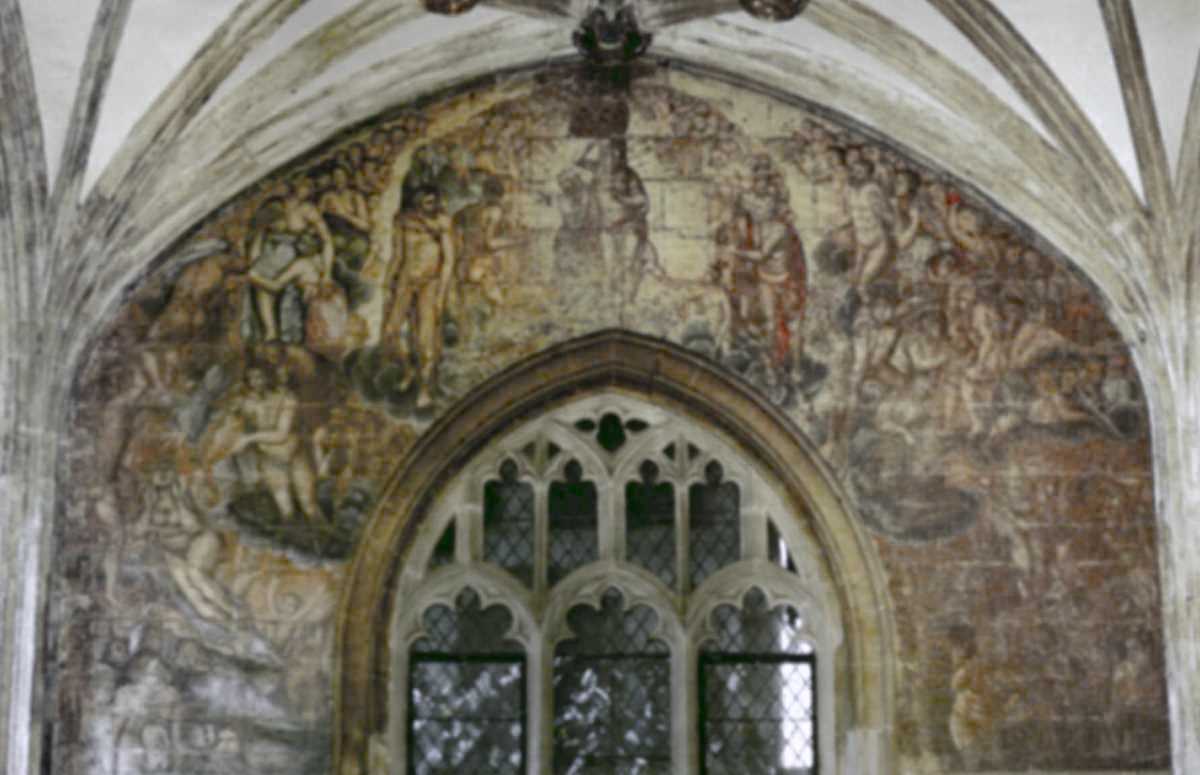
"Heaven and Hell"
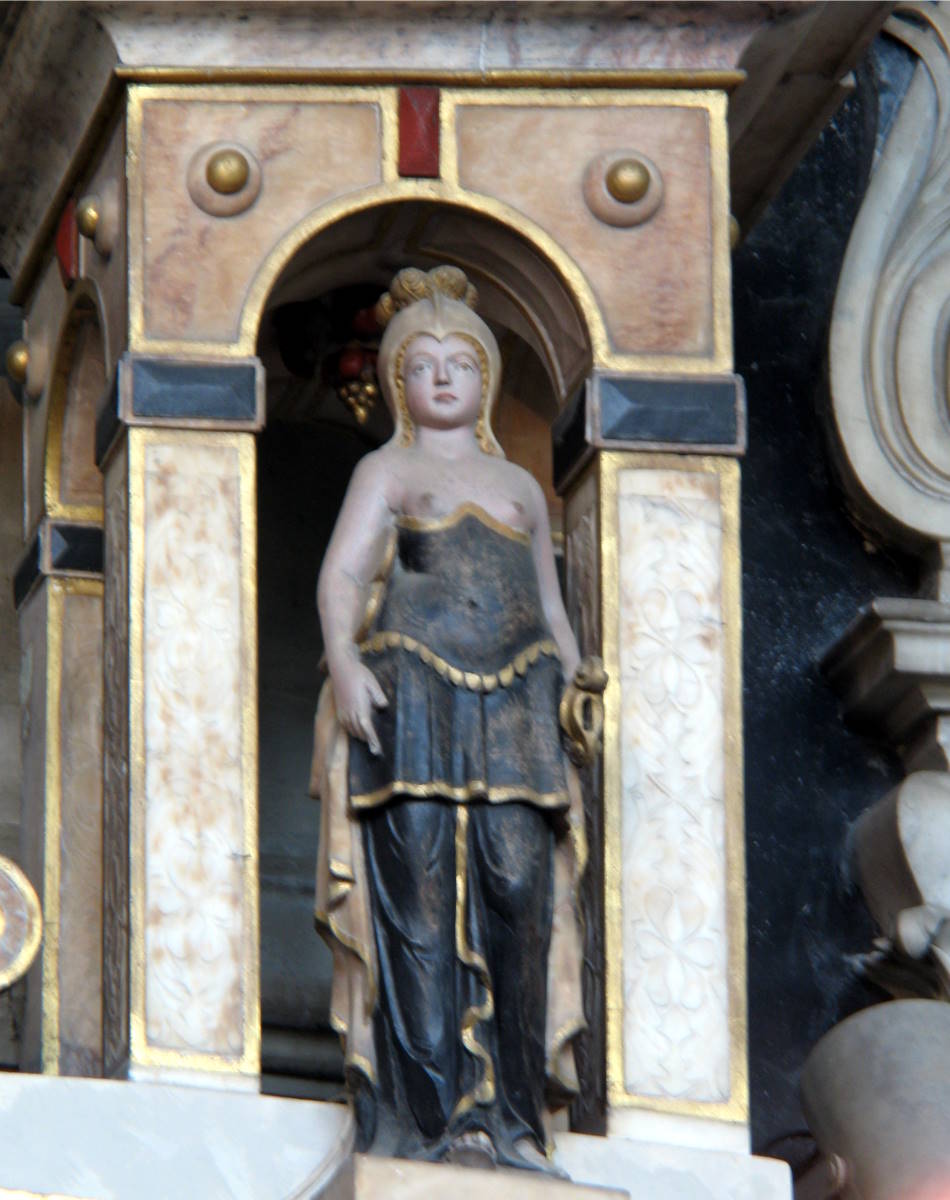
"War"
Lord Leycester Hospital
| The buildings that comprise the Hospital contain the ancient Chantry Chapel of St James, built over the West Gate into Warwick by Thomas Beauchamp, 12th Earl of Warwick, in the latter half of the 14th Century. The Guild of St George was created under a license issued by King Richard II on 20th April, 1383, and Thomas Beauchamp granted the benefice of the Chantry Chapel to the Guild on its formation. Sometime between 1386 and 1413, the Guild of the Blessed Virgin, based at the Collegiate Church of St Mary, joined the Guild of St George at the West Gate. To accommodate the resident priests and the guilds, reception, meeting and dining halls were built as well as living quarters. They became known as the United Guilds of Warwick. In 1546, when they were dispersed by King Henry VIII, the United Guilds were able to save their property from seizure through the admirable foresight of their Master, Thomas Oken, who had it transferred to the Burgesses of Warwick. In 1571, Robert Dudley, Earl of Leycester acquired the buildings and founded, under charter from Queen Elizabeth I, a Hospital for aged or disabled soldiers and their wives. The Charter set up a corporation consisting of the Master in charge of the Hospital and the twelve resident Brethren, which was endowed with estates producing an income of £200 per year. After viewing the buildings inside and out, our party was provided with a substantial lunch in the tea rooms that are now available on the site. Following this we visited the garden where photographed the bear and staff sculpture. On closer inspection the staff turned out to be a salmon captured by the bear. On leaving we said our goodbye's and thanks to Graham Sutherland our excellent guide. |

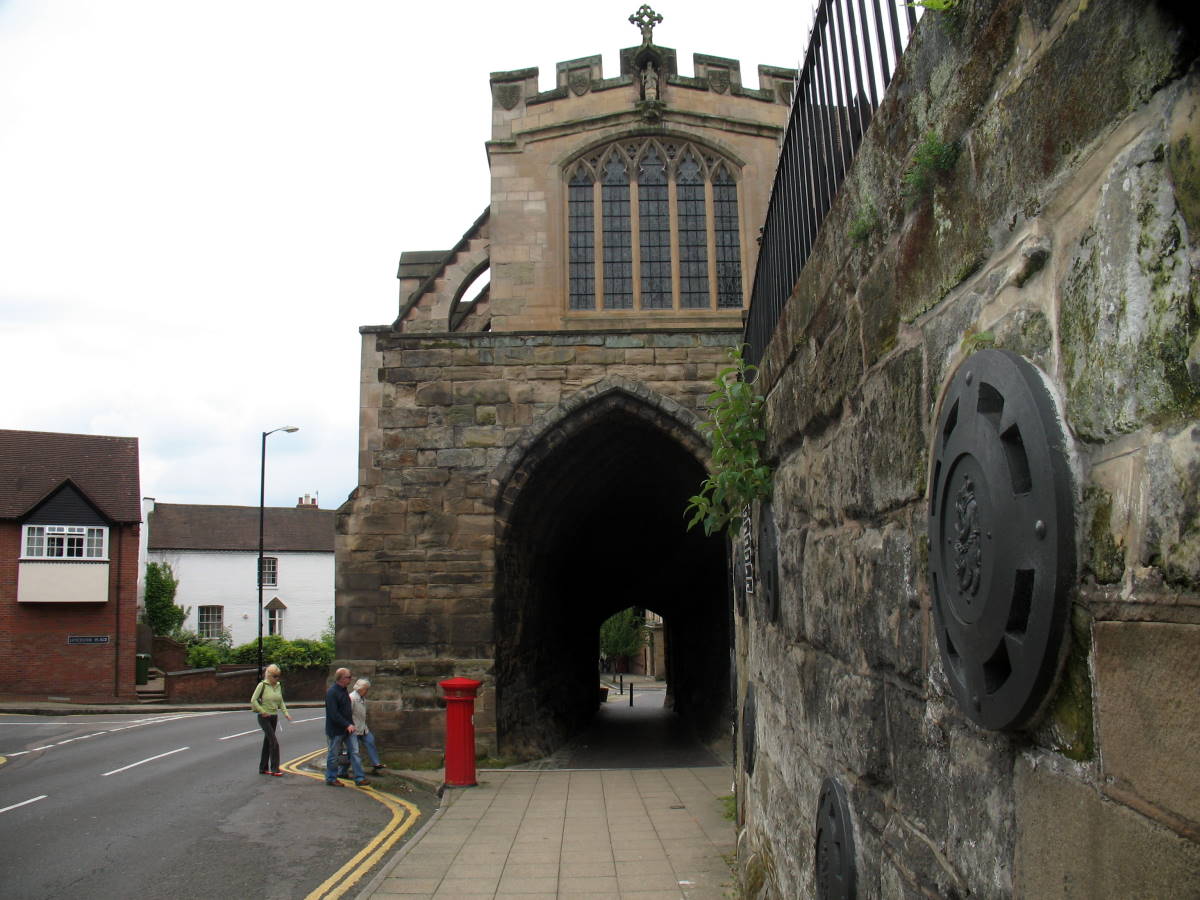
West Gate

The Way To The Entry
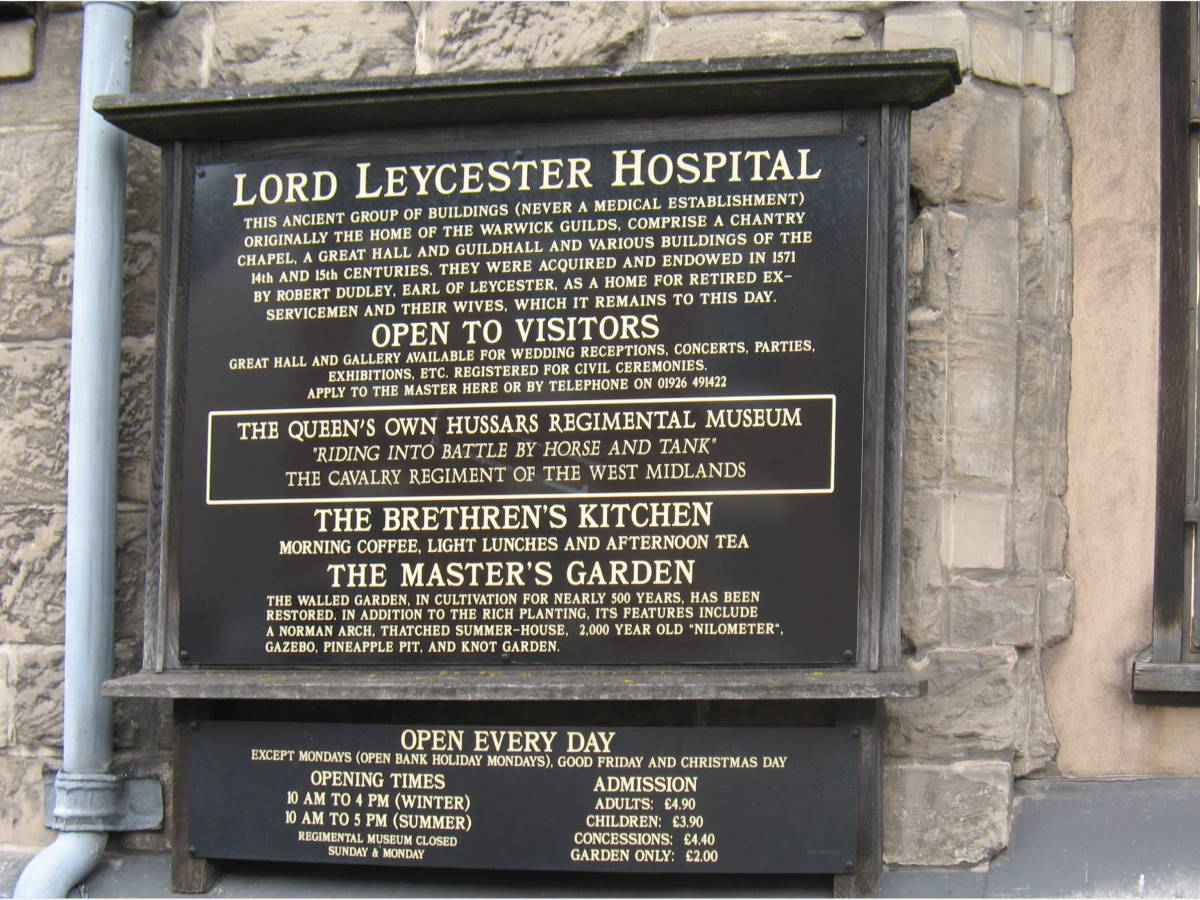
The Sign
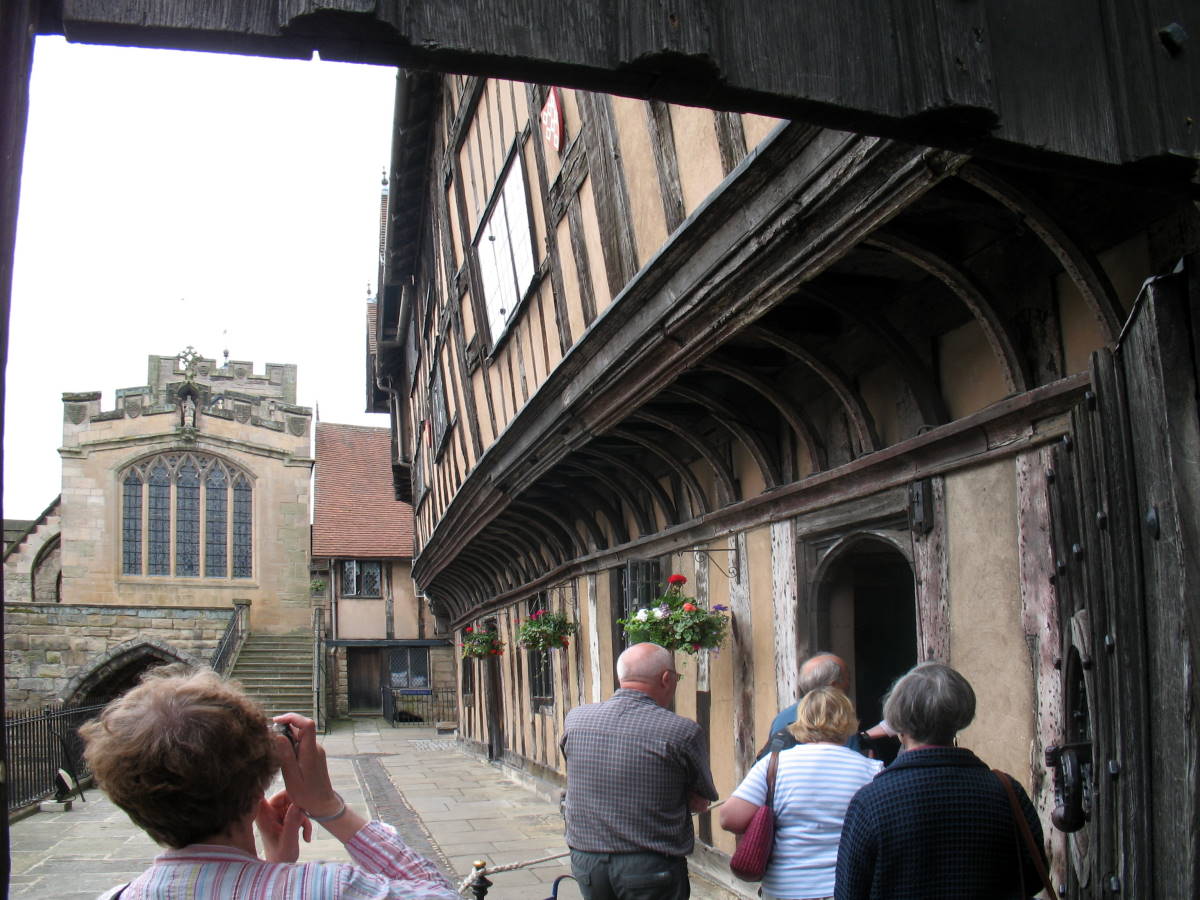
Entering
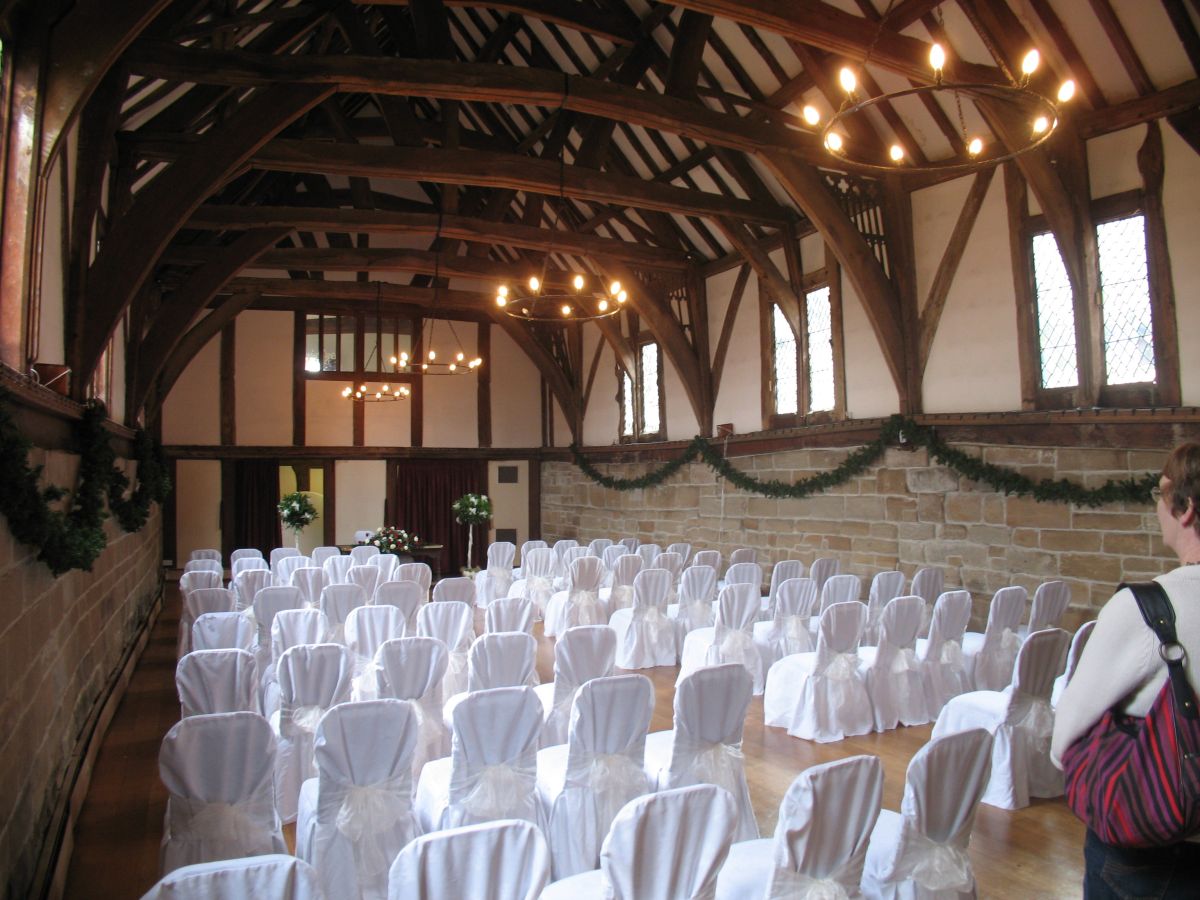
The Great Hall
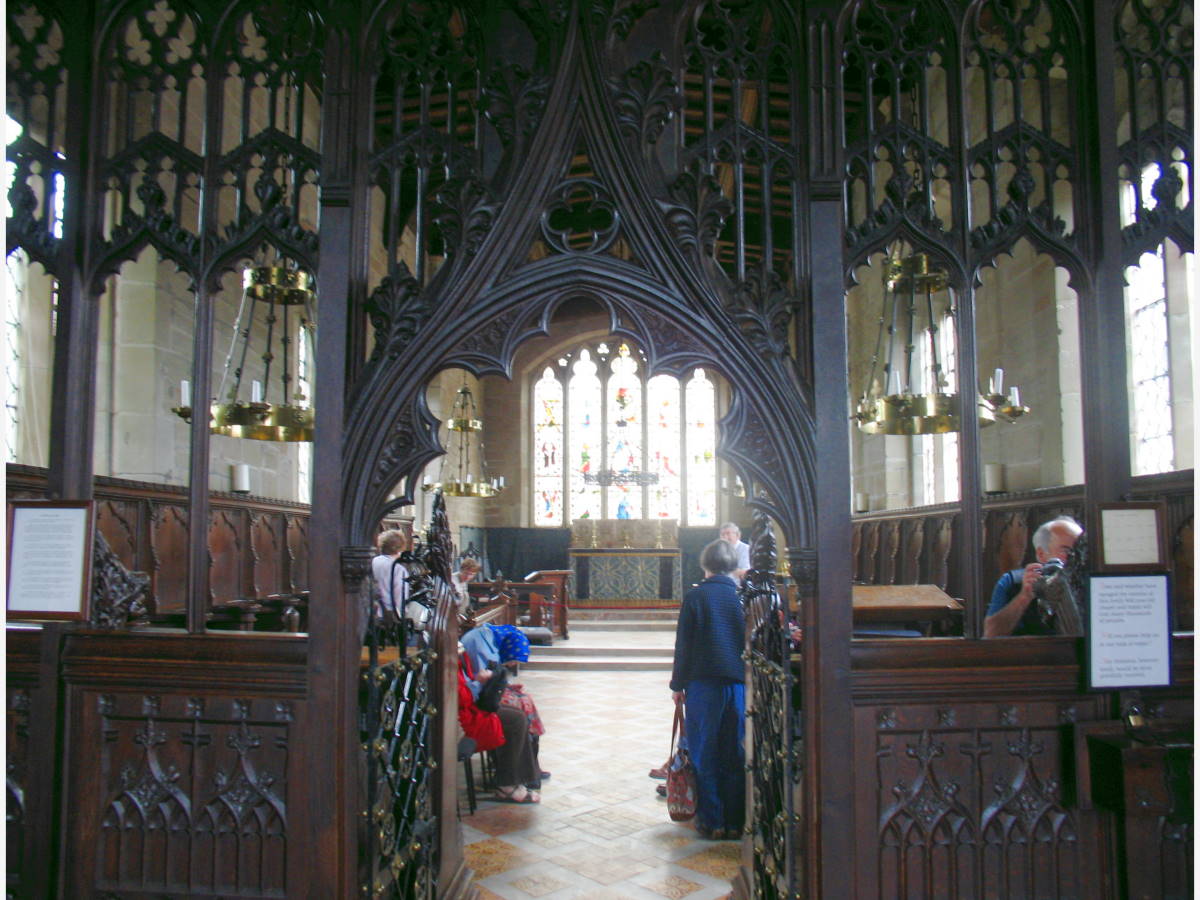
The Chantry Church
Built
Thomas Beauchamp
Thomas Beauchamp
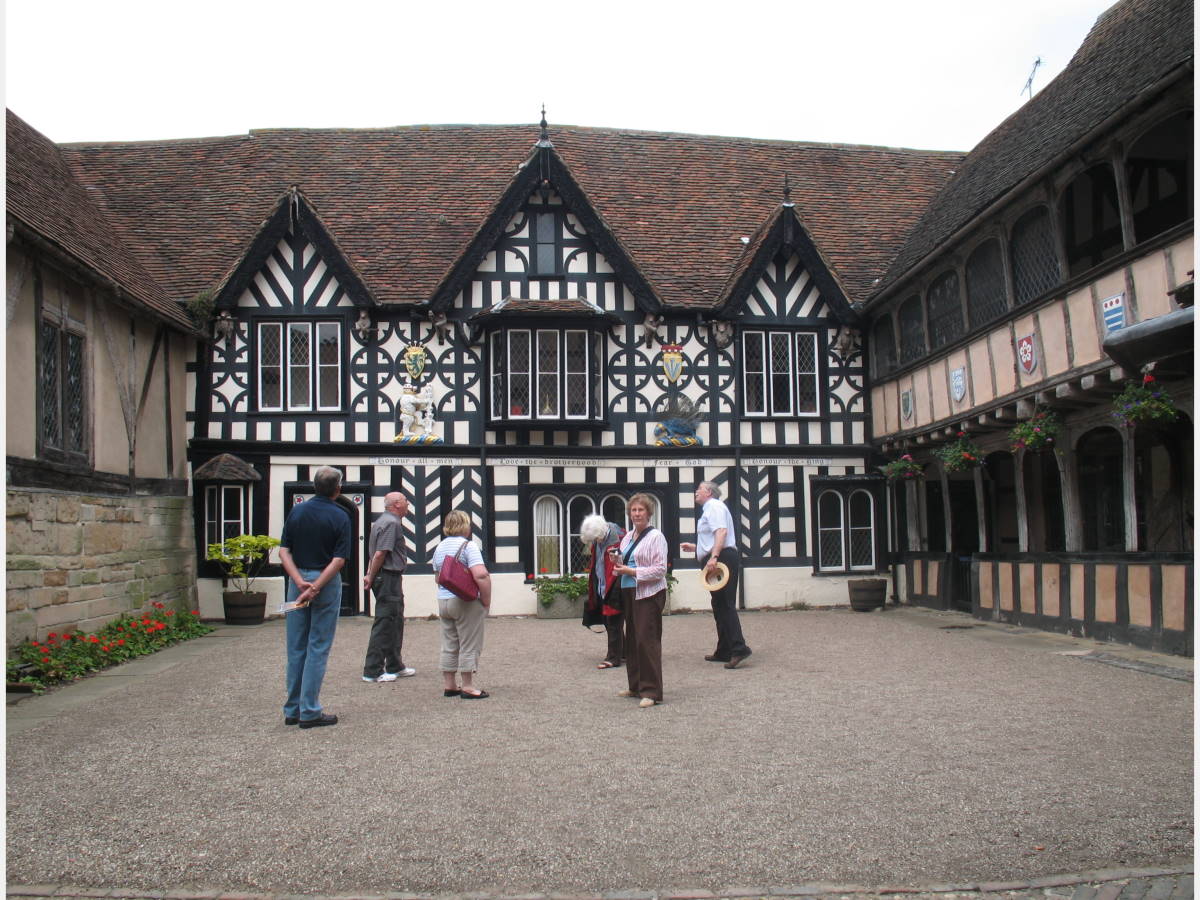
The Courtyard
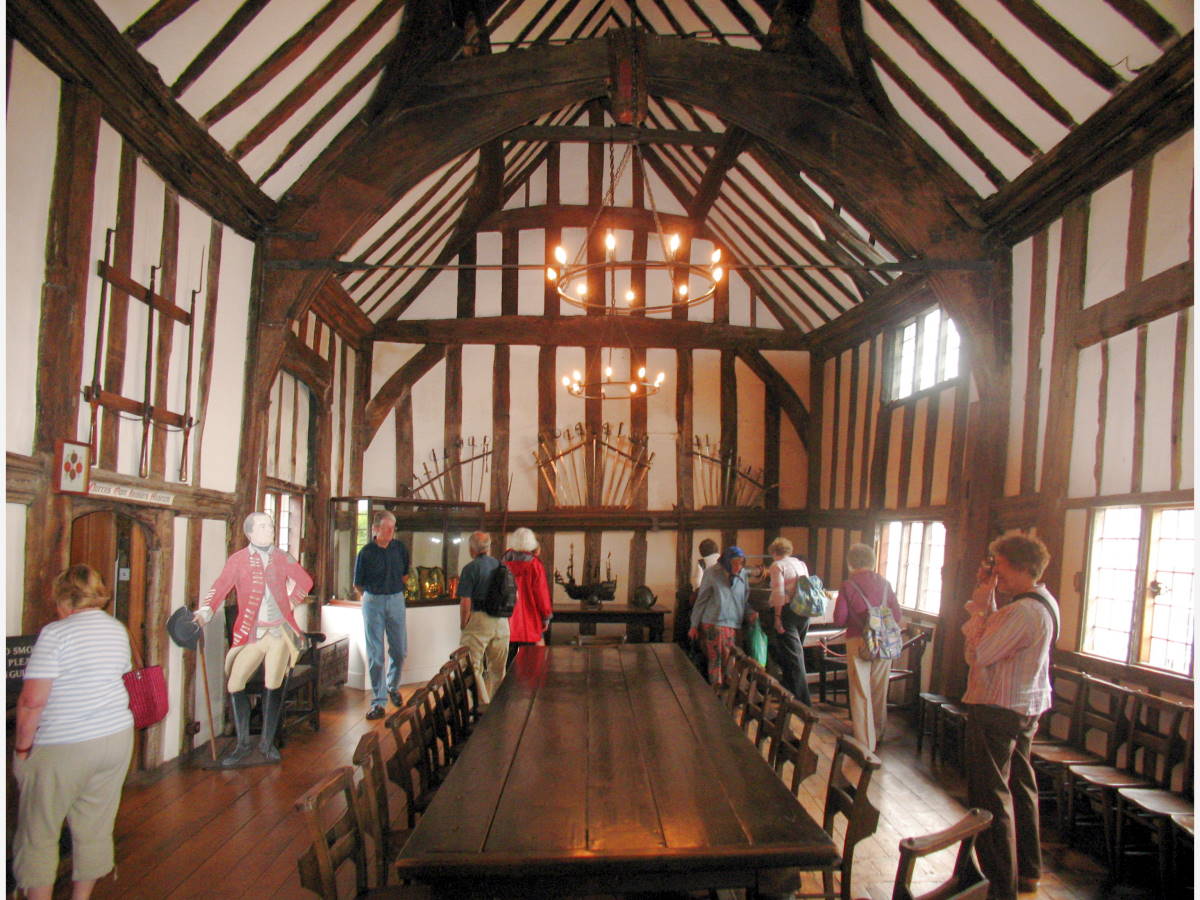
The Queens Own Hussars Regimental Museum
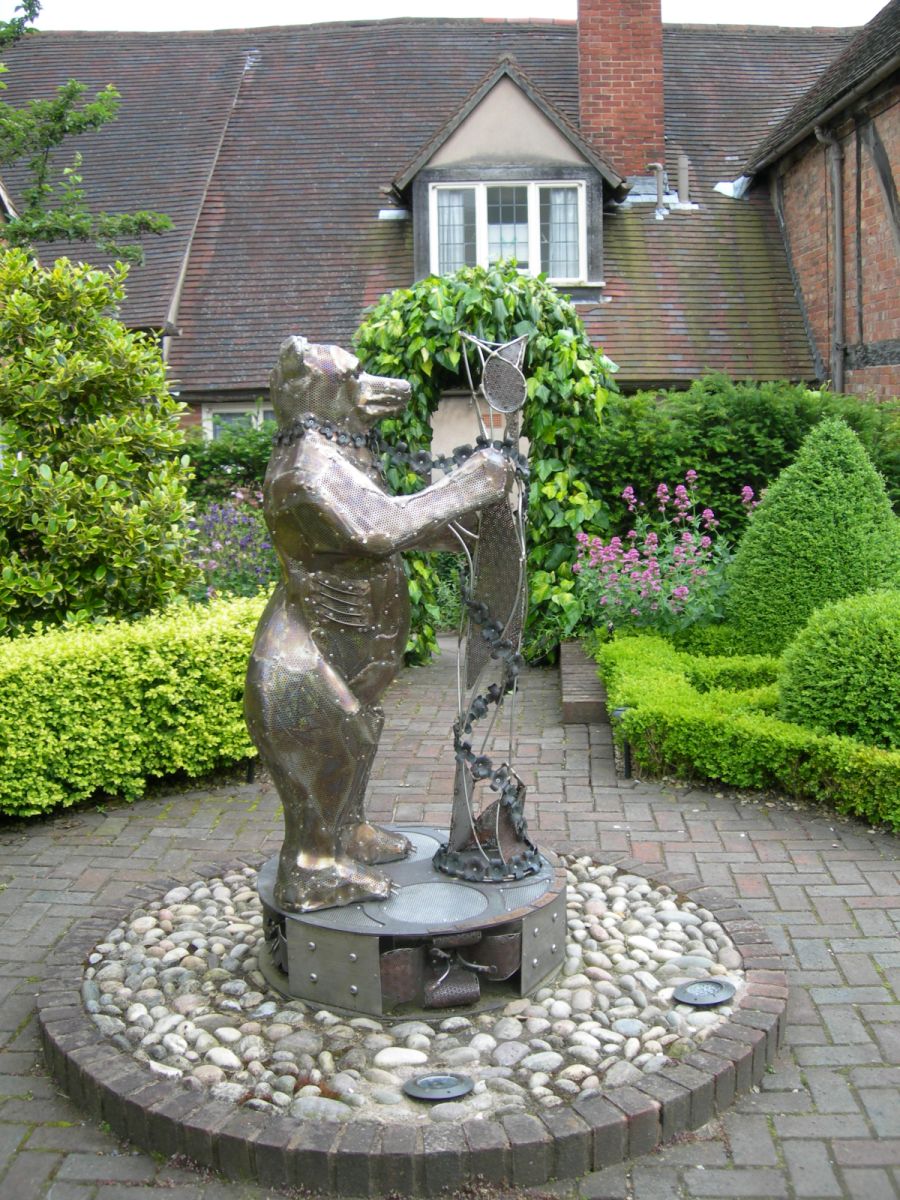
Bear and Staff
in The Garden
in The Garden
Mill StreetWe then completed our visit to Warwick by going to the Mill Gardens at the end of Mill Street with views of the Avon and a nesting swan. A perfect end to a very interesting day. |
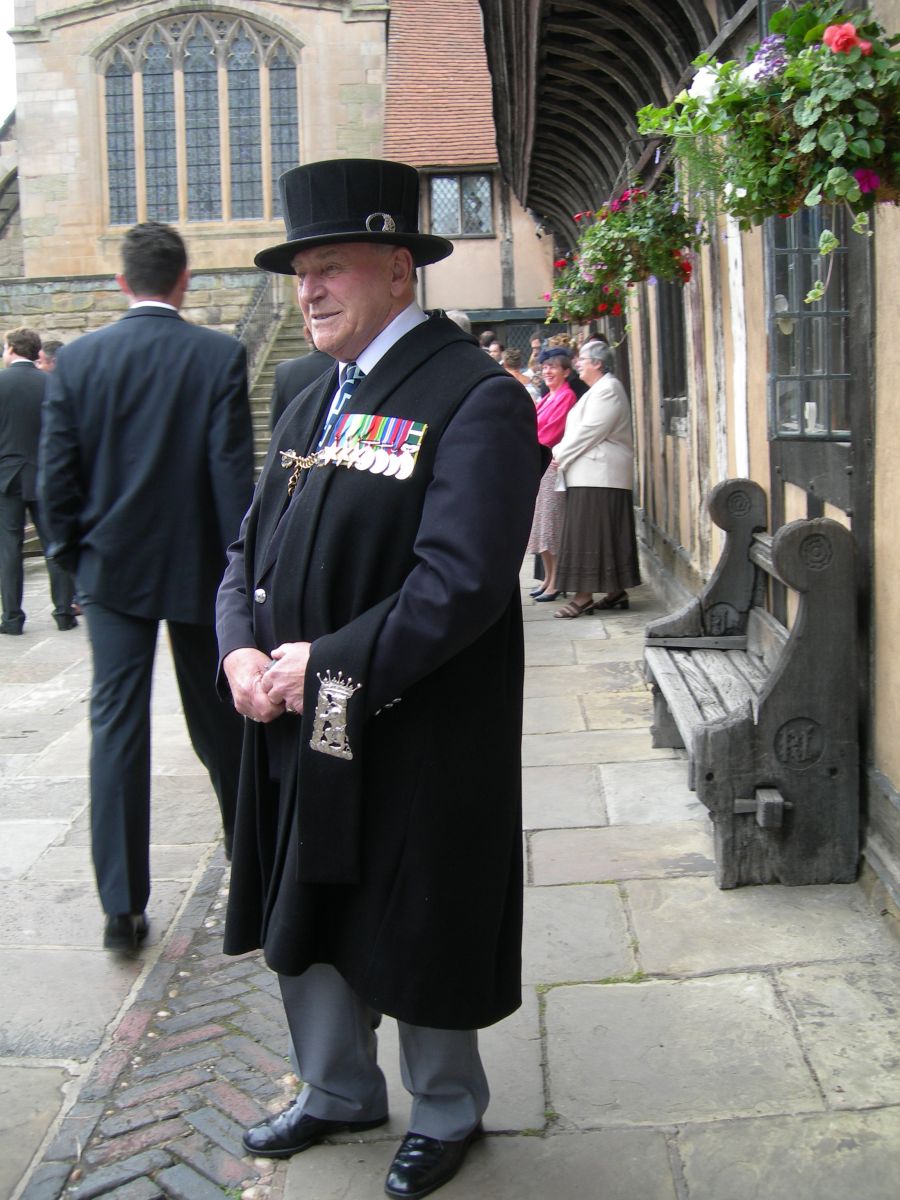
Exiting
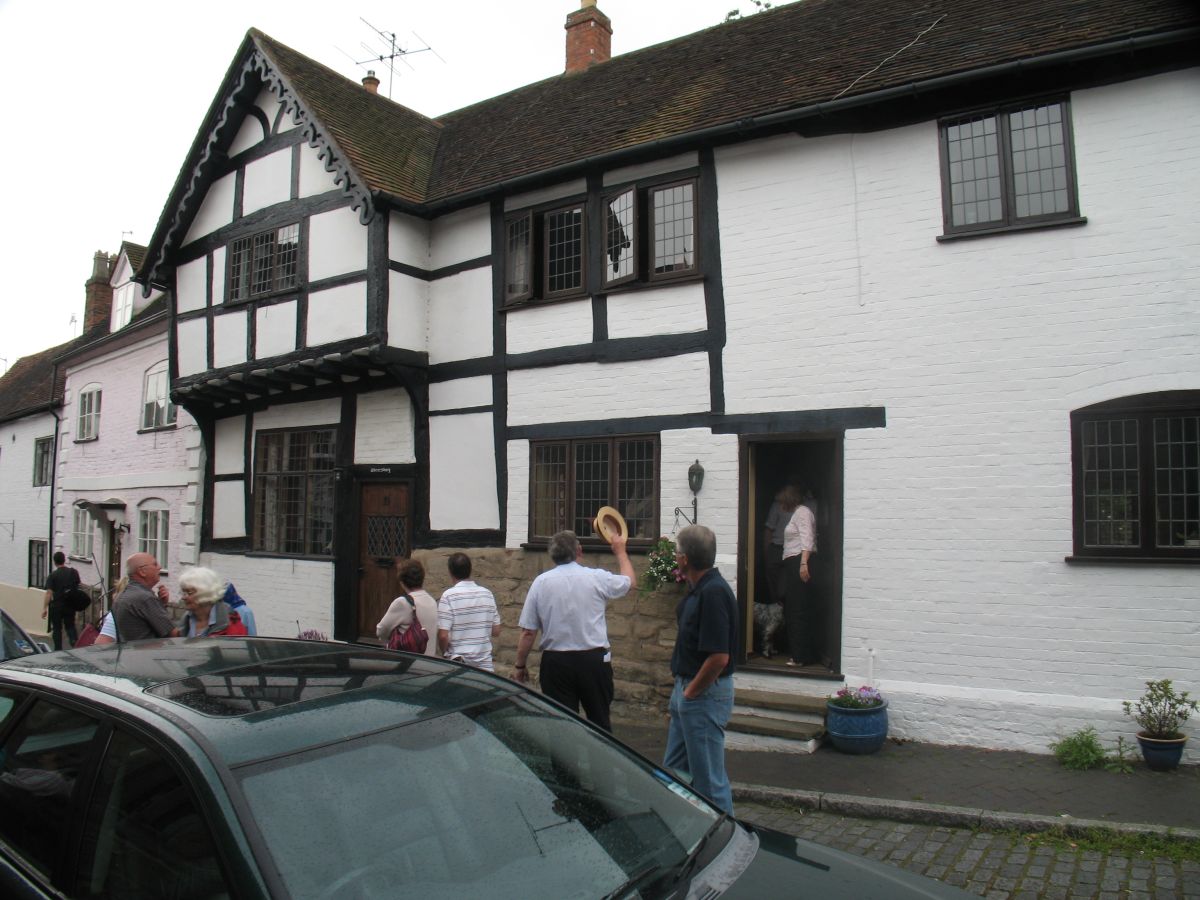
Visit To Medieval House In Mill Street

Interior
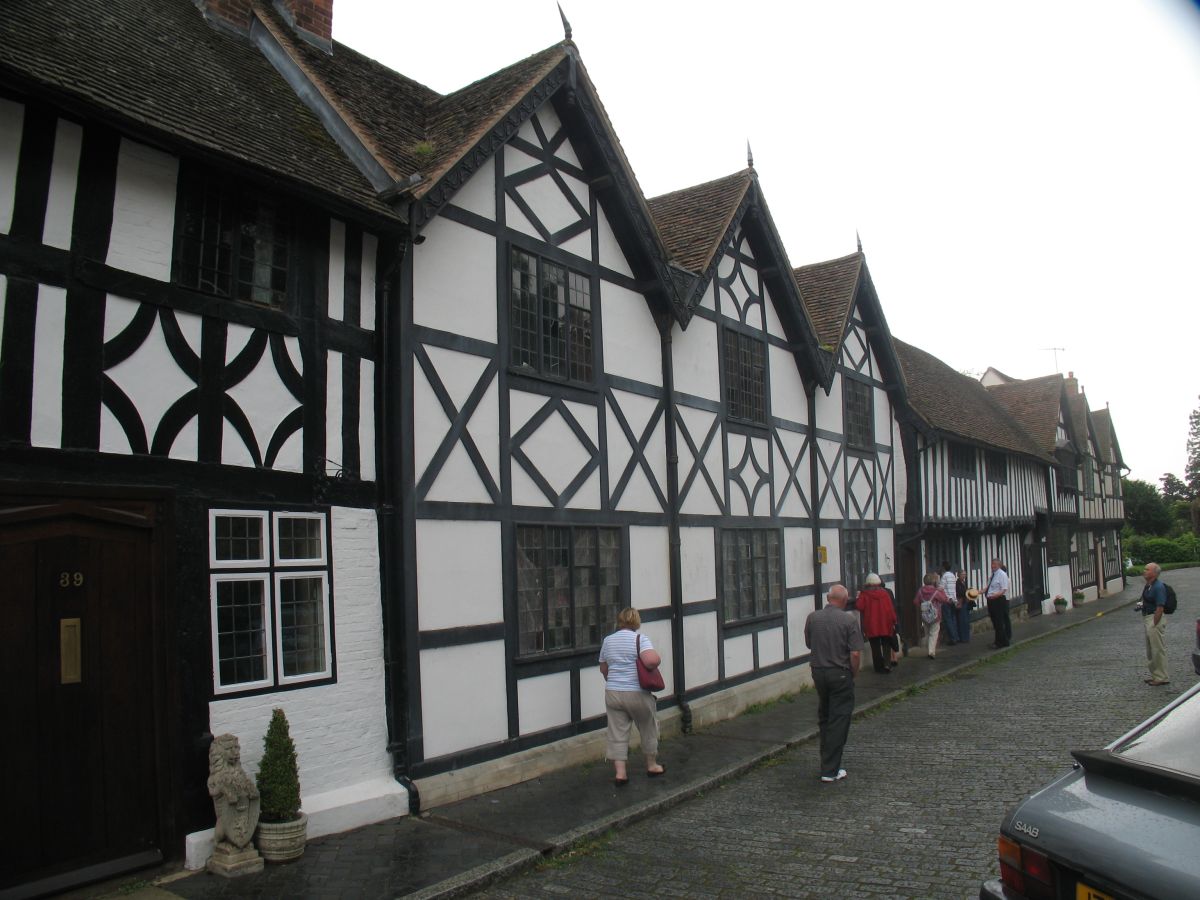
More Mill Street
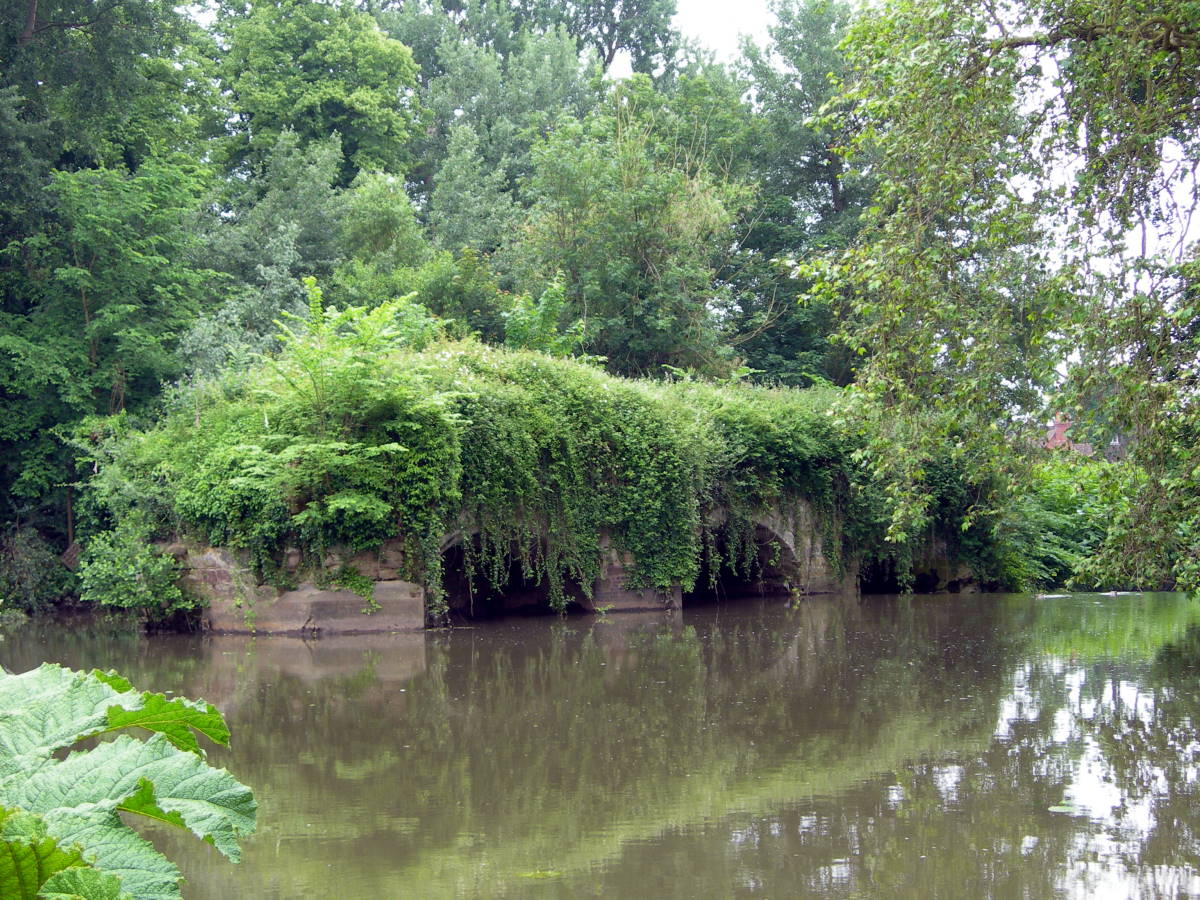
Ruined Bridge Foundations
